
Ibor
-
Posts
79 -
Joined
-
Last visited
Content Type
Profiles
Forums
Articles
Gallery
Downloads
Events
Posts posted by Ibor
-
-
Thank you gentlemen, George N.M. is tin bronze with a small amount of silicon,that's right, I do everything by hand with files, punches and whetstones, large grinding stones.
-
-
Thanks Gentlemen.
George, this pattern, as well as all others made on bronze or iron, engraves by hand a sharpened piece of iron wire with a stylus.
I deal with experimental archeology, so I naturally use tools, both stone and bronze.
In the case of bronze stocked axes, in my opinion, they fulfill their tasks very well, both as a tool and a weapon.
Of course, the technique of using them for e.g. processing hard wood (oak, beech, ash, etc.) is completely different than that of a modern ax. -
The Bronze Age in Europe was the dominance of solar cults whose main attribute were axes as cult objects. I present a few of my authorship.
1.Bronze ceremonial ax from Krottenthal, Germany, 1300 - 1100 B.C.The two magnificent weapons belong to the earliest discoveries kept at the Archäologische Staatssammlung (Archaeological State Collection). In c.1784, a farmer in Krottenthal in Lower Bavaria dug up and sold some weapons. Quite obviously, the weapons belonged to a depot find, but most of the pieces probably went to the furnace. At least it was possible to save two pieces.The axe was brought to the Bayerische Akademie der Wissenschaften (Bavarian Academy of Sciences) in 1808 as a weapon of "outstanding beauty". The affiliation of the lance with the trove is not quite so clear. In the Nationalmuseum's (National Museum) old collection, it was the only object of the same quality from an unknown location. Because of the very similar patina, it was assigned to the Krottenthal Find. The axe is unique. The dating to the thirteenth to the eleventh centuries BC is based on the age of the lance tip "found nearby". The Krottenthal Axe would have been useless as a tool. It was either a ritual weapon or denoted rulership.The description and the first photo of the artifact come from the website:Overall length 27 cm, blade width 12.5 cm, weight 770 grams.2.Socket ax with a bird, Ordos plateau, 4th century BC.Length of the ax 13 cm, the width of the blade 5 cm, weight 290 grams.Total length 54 cm.Oak wood greased with wild boar.3.Flanged ax 39 cm long !!! and weighing more than one and a half kilograms comes from Mareuil-sur-Ourcq, France.The second one, set in a wooden handle, is also from France in Lignieres .... and is the only one of its type !!Combine socketed ax with flanged ax! -
Thank You Gentlemen!
-
-
-
-
George,The sleeves are not welded, fused to the face.
Thanks Frosty,
-
-
Germanic spears based on the Vimose finds. The longest with an octagonal sleeve is 48.5 cm and weighs 330 grams. The other two have rounded sleeves, 39.5 cm and 38.5 cm long, and each brew 300 grams. The knife is a Germanic standard with a Vimose pattern from a single-edged sword. Blade 19 cm long, whole knife 30 cm.
-
On 4/23/2019 at 8:25 PM, navasky said:
Those came out great. How did you do the rib?
... I have described it several times ... first in form then on the side of the anvil.
-
... I'm here .... what's happening?
-
Thanks Frosty!
These knives were used in the period of La Tene, mainly in the Eastern Celts, although they are also found in Germany.
In many books they are described as "ritual knives for cutting meat" ..... I strongly disagree with that!
The way the handpiece is made proves it!
The handles are very short and have two balls, they are adapted to hold them in two fingers and ask for cut punches, from above in a large or opposite way.
To cut the meat you need a much better grip, with all your hand !! -
-
Spear with a ball, length 54.5 cm, width 3.5 cm, hole 2 cm, weight 410 grams. Knife, length 41.5 cm, width 4 cm, weight 320 gram. Javelin, length 19 cm, width 2.5 cm, hole 1.8 cm, weight 110 grams. Ax, profiled, eight-wall, 16 cm long, blade width 4 cm, hole 2.5 cmX 3.5 cm, weight 390 grams.
Everything is forged by hand, with a hammer.
Zero power hammer, zero electric welding! -
Asymmetrical spear with central ribs and hexagonal sleeve.
Forged based on finds from Nydam, Jutland. Length 45 cm, width 4.5 cm, hole 1.9 cm, weight 445 grams.
Knife, 28.5 cm, walnut handle, leather sheath, bone tip. Length in sheath 30 cm (Illerup Adal, Nydam) Spear, length 37.5 cm, width 3.5 cm, hole 1.9 cm, weight 210 grams,hexagonal sleeve (Illerup Adal) Ax, iron welded, length 16.5 cm, hole 3.5 cm X3 cm, weight 450 grams (Nydam).
Ax plus spear, . Welded ax, length 17.5 cm, hole 3 cm, blade width 6 cm, profiled blade eight wall, weight 540 grams. Spear, length 31 cm, hole 19 mm, width 3.7 cm, weight 220 grams.
Iron Age (Illerup Adal) set.
-
-
Frosty, I have two small pliers, one small, the other big.
-
-
-
The entire forging process.
Thickness of the rod 20mm.
Initially 27 cm with the sleeve ..... stretched to 40 cm length of the entire spear.....and here is Celtic iron ...
Spears from the left; Asymmetric, 42 cm, width 5 cm, hole 22 mm, weight 390 grams. Wide, 46 cm, width 7.5 cm, hole 19 mm, weight 450 grams. Asymmetric 35,5 cm, width 5 cm, hole 22 mm, weight 300 grams. Long, thin, 51 cm, width 4 cm, hole 20 mm, weight 400 grams. Long, asymmetrical 55,5 cm, width 5 cm, hole 24 mm, weight 460 grams. Last asymmetric 35 cm, width 4 cm, hole 20 mm, weight 290 gram. Knife behind the decorated ridge 52 cm, width 4.5 cm, weight 460 grams. The second knife 50.5 cm, width 5.5 cm, weight 480 grams. ZERO ELECTRIC WELDING! ZERO POWER HAMMER! EVERYTHING HAND FORGED FROM ONE PIECE OF IRON
... and a little more ...
-
Thanks!
If the handle is fitted to your hand, it's great!
The balls provide a good grip and secure grip when taking a blow, no matter what, cutting or stabbing. -
Scythians were dominated by a zoomorphic motif, anthropomorphic and geometrical in Celts. As in the Scythians, the most common representations are images of mythical animals, such as Celtic circles, circles and wavy lines. Circle, sphere, etc as a symbol of the life cycle .... etc ... Long spear with a ball, period of La Tene, Germany. Length 50 cm,widest point 3.7 cm, hole 2.1 cm, weight 430 grams. An asymmetrical spear, period of La Tene, France. The length of 37.5 cm,widest point is 4.6 cm, hole 2,3,cm,weight 390 gram. Long knife, Hiebmesser, period of La Tene, Germany. Length 45 cm, widest point 4.5 cm, weight 440 gram. Shorter, engraved knife, type Durrnberg (in german language Ringknaufmesser) period of La Tene, Germany. Length 38 cm,widest point 3.7 cm, weight 310 gram ... and I forgot to add ... IMPORTANT !. Everything is forged by hand, with a hammer! Zero electric welding! Zero power hammer !!
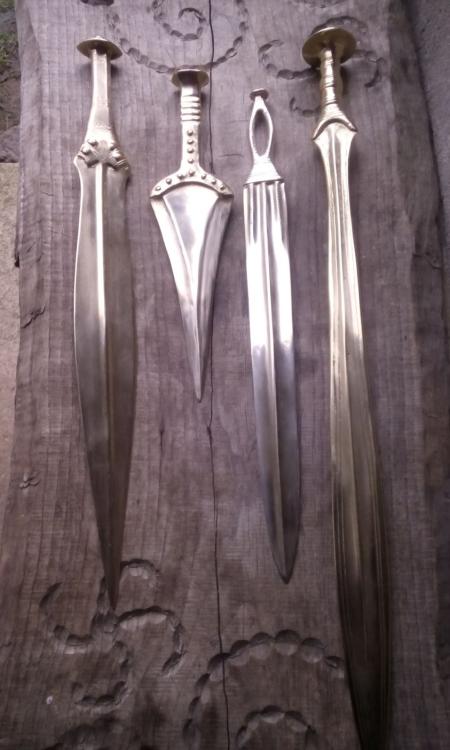
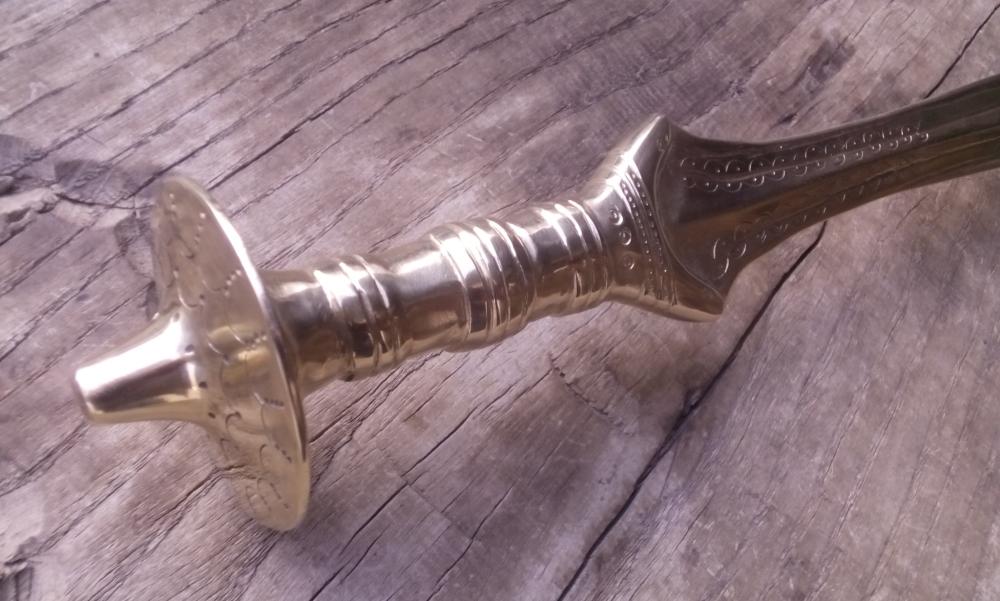
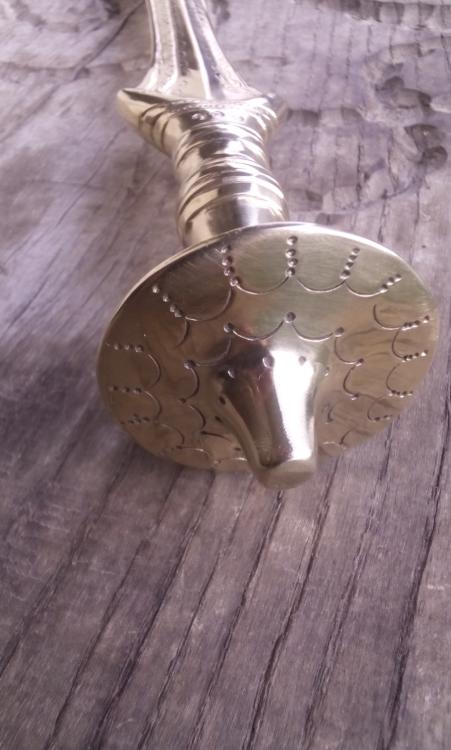
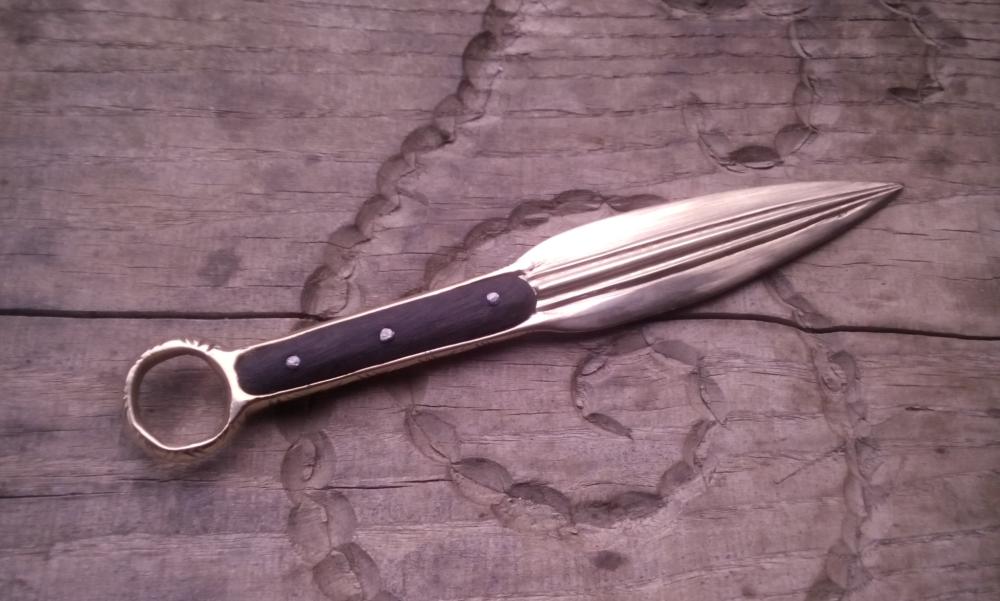
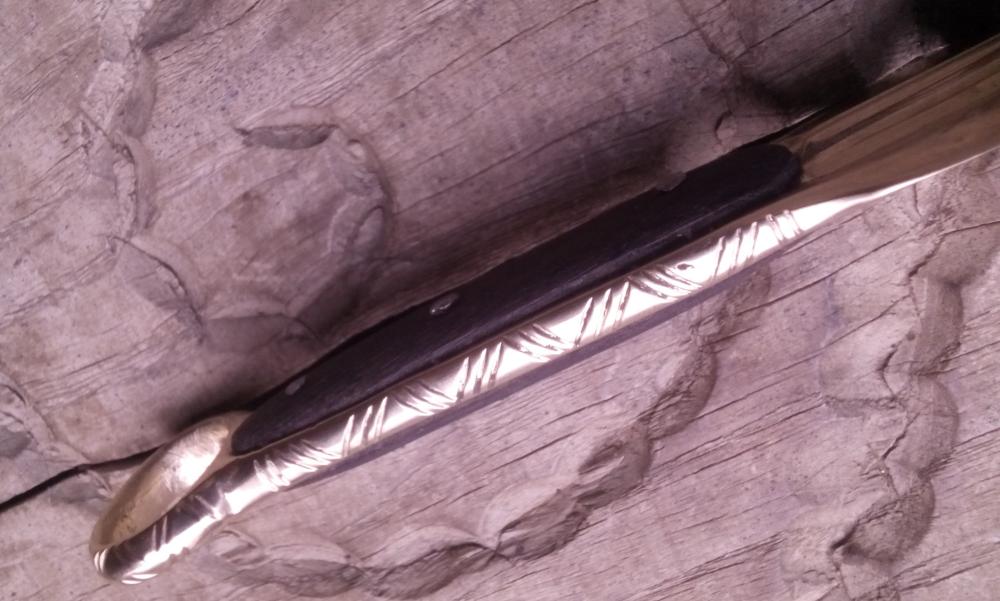
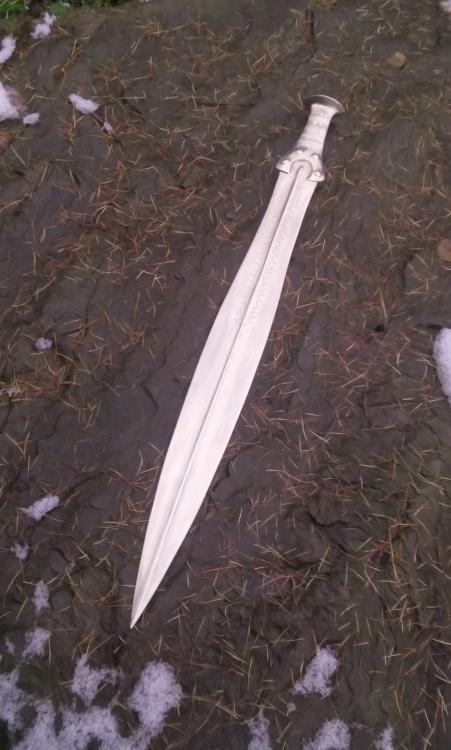
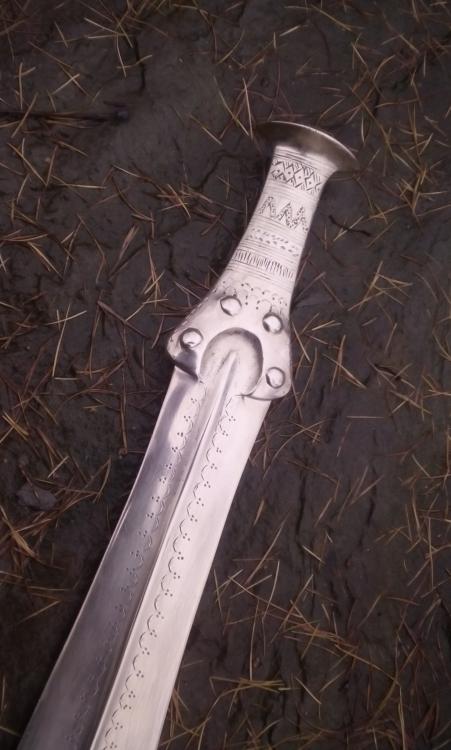
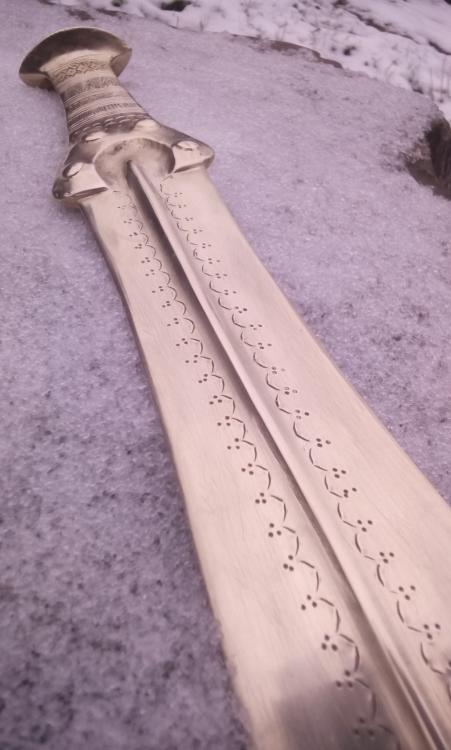
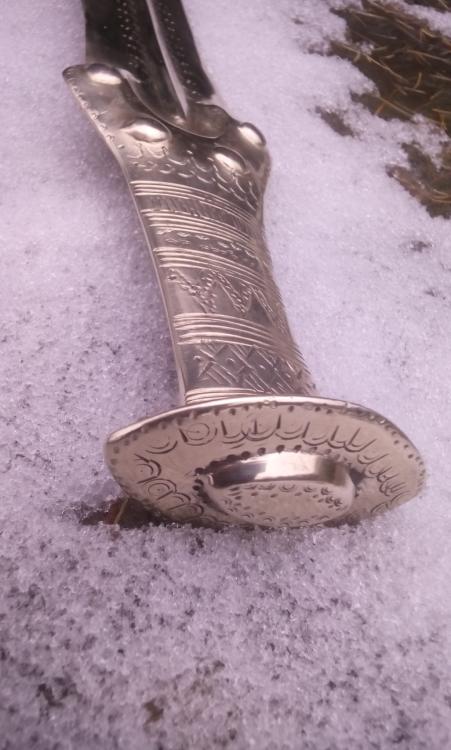
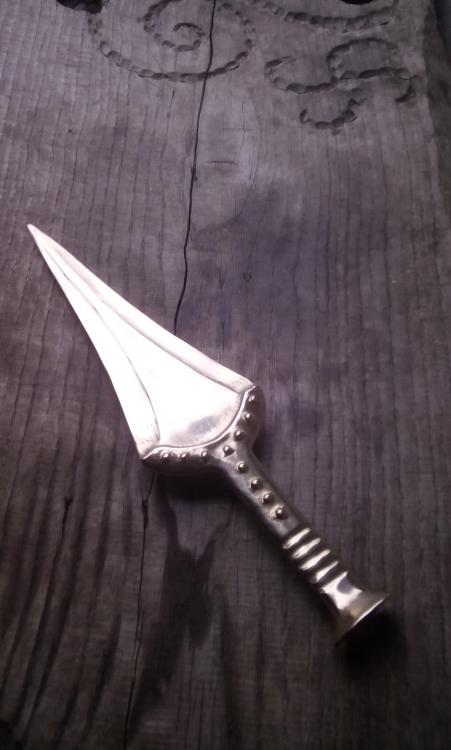
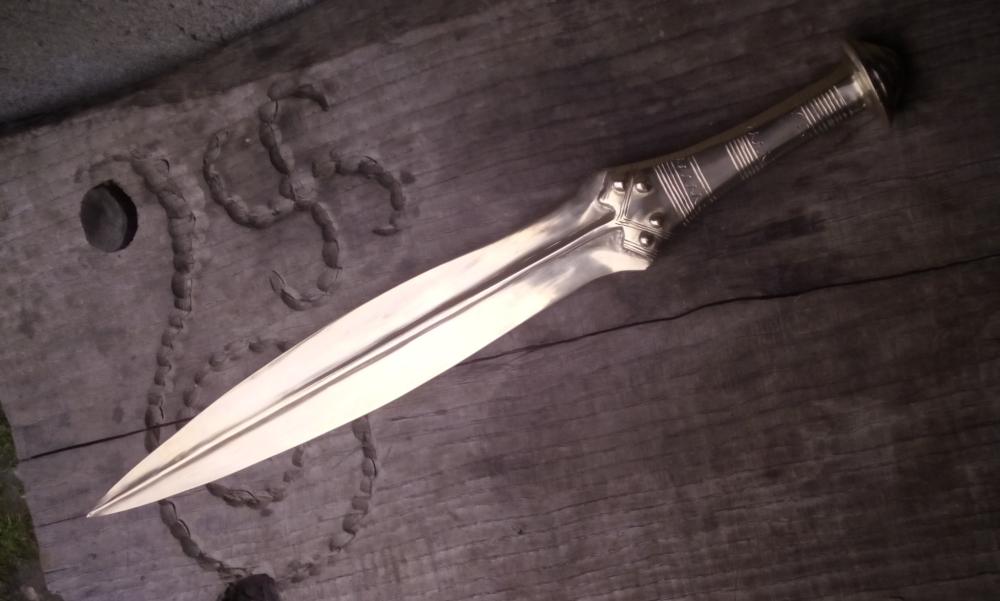
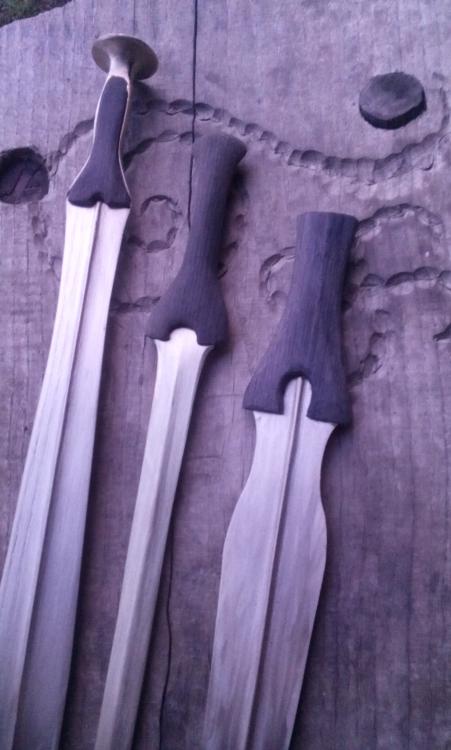
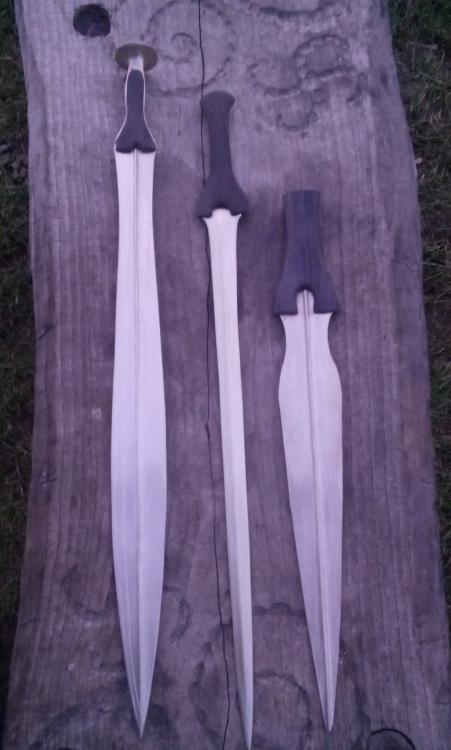
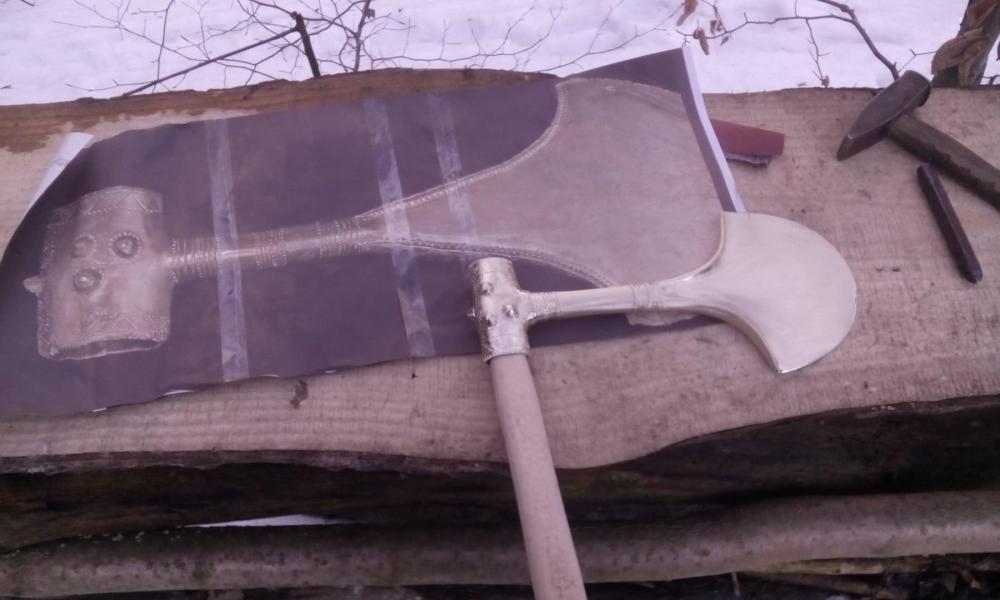
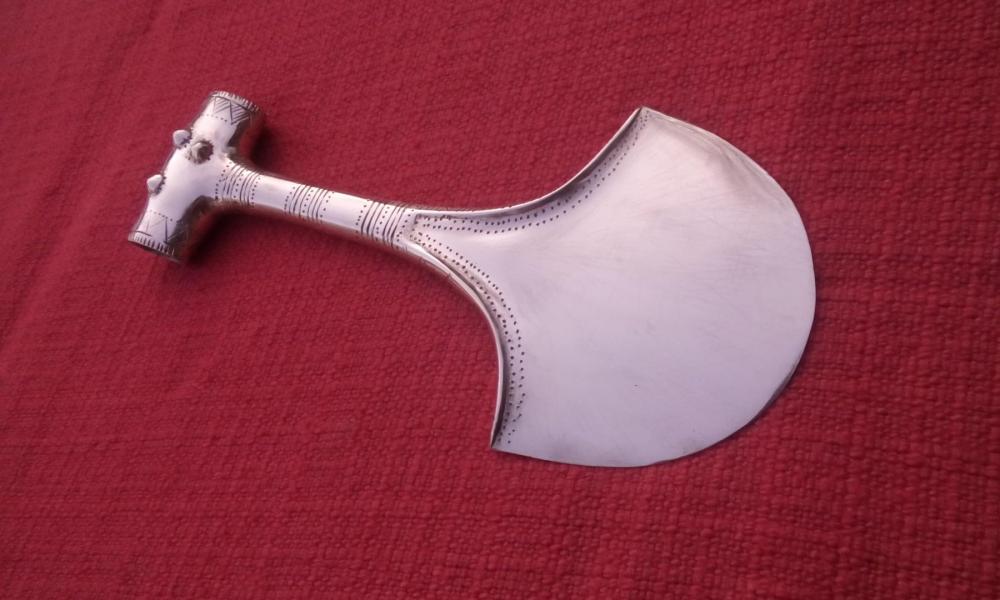
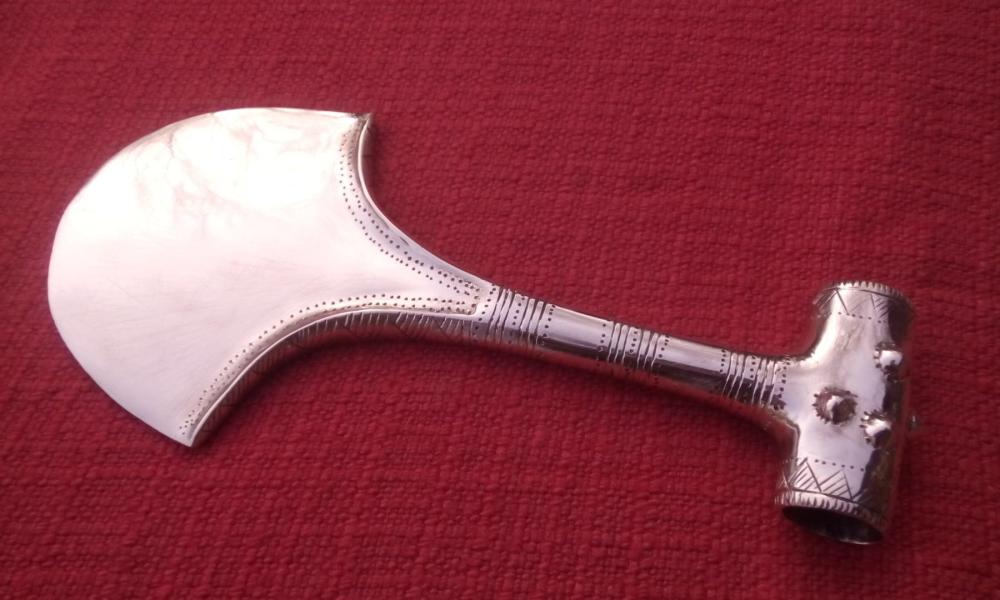
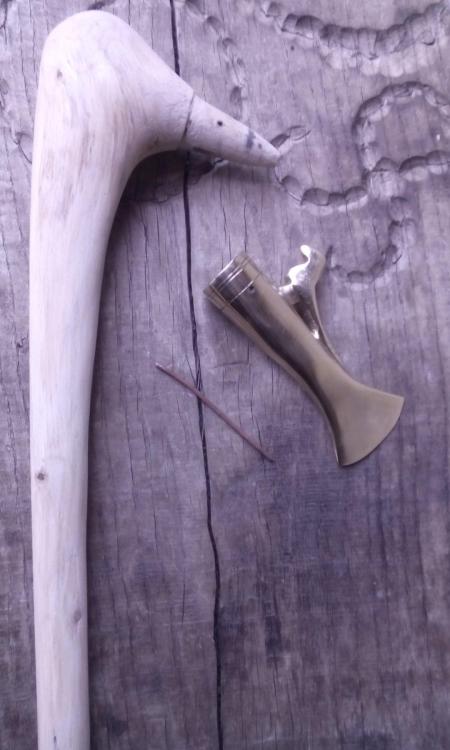
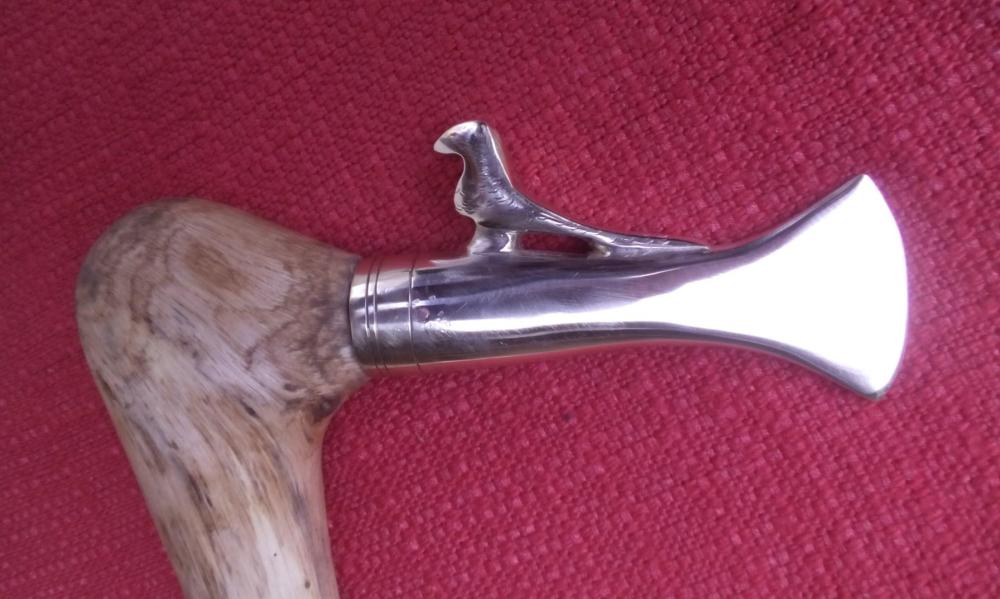
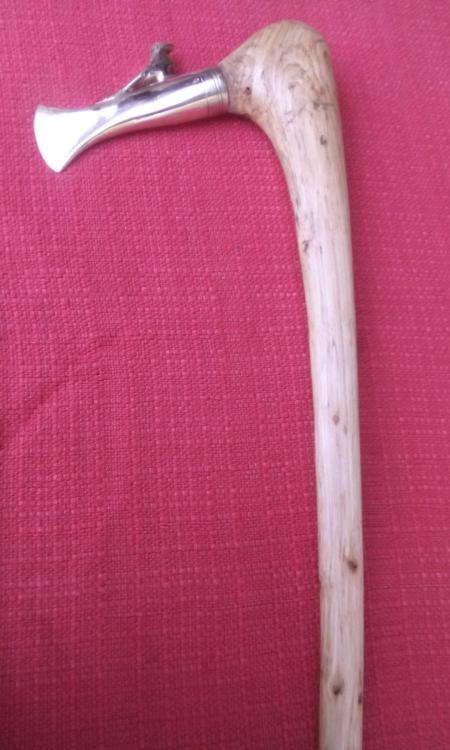
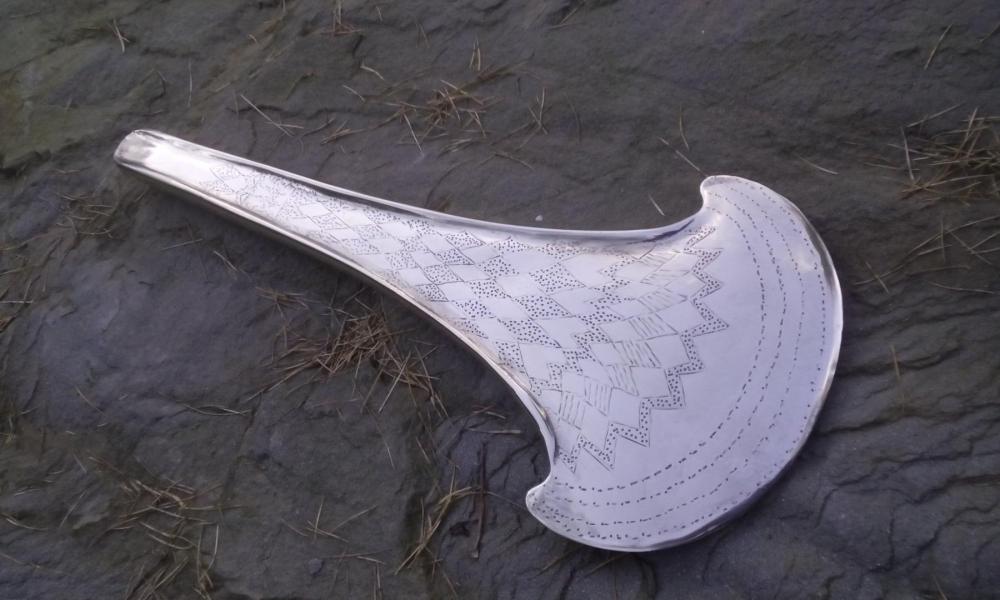
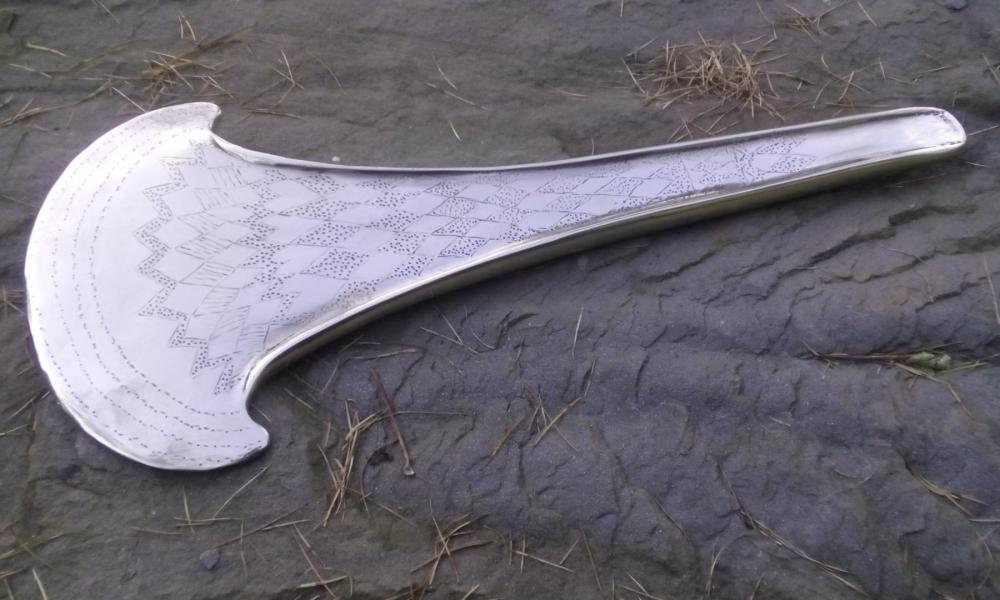
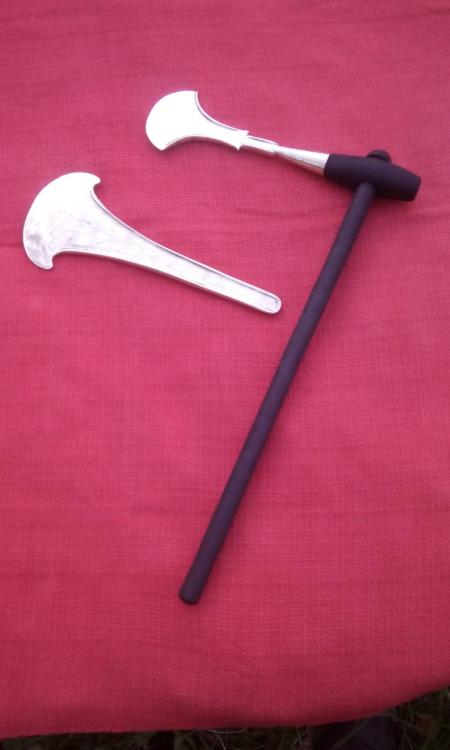
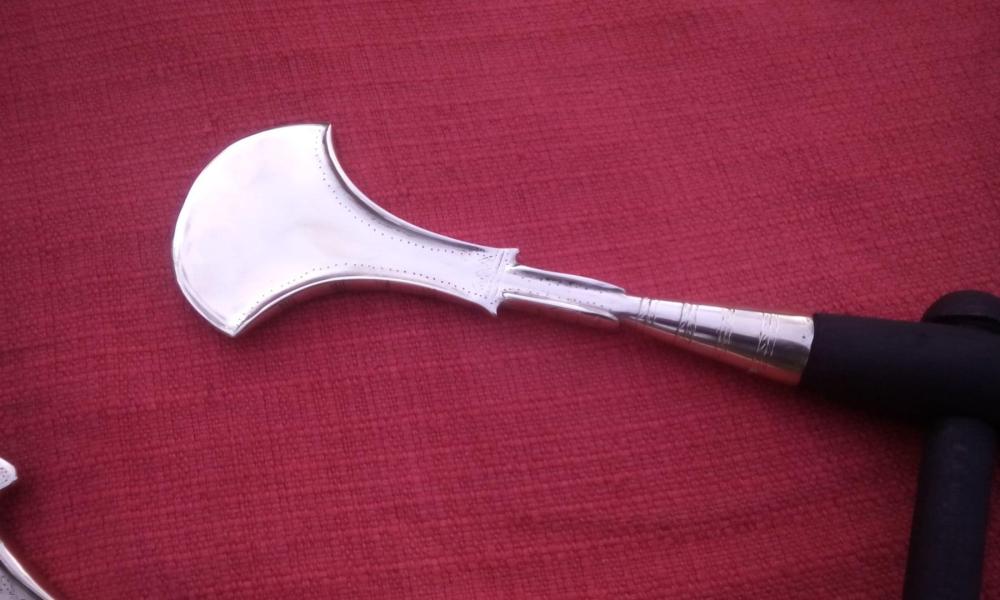
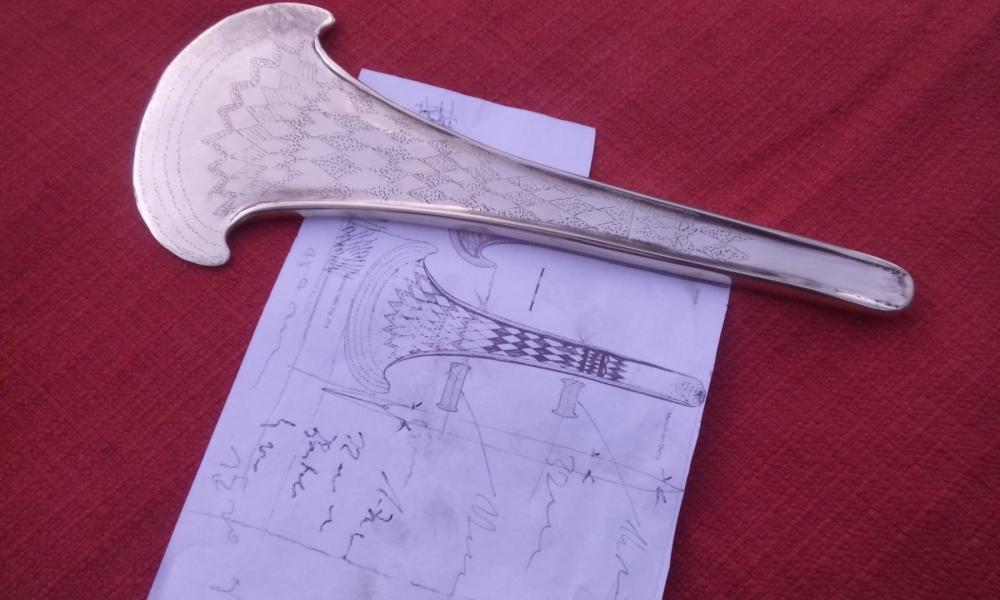
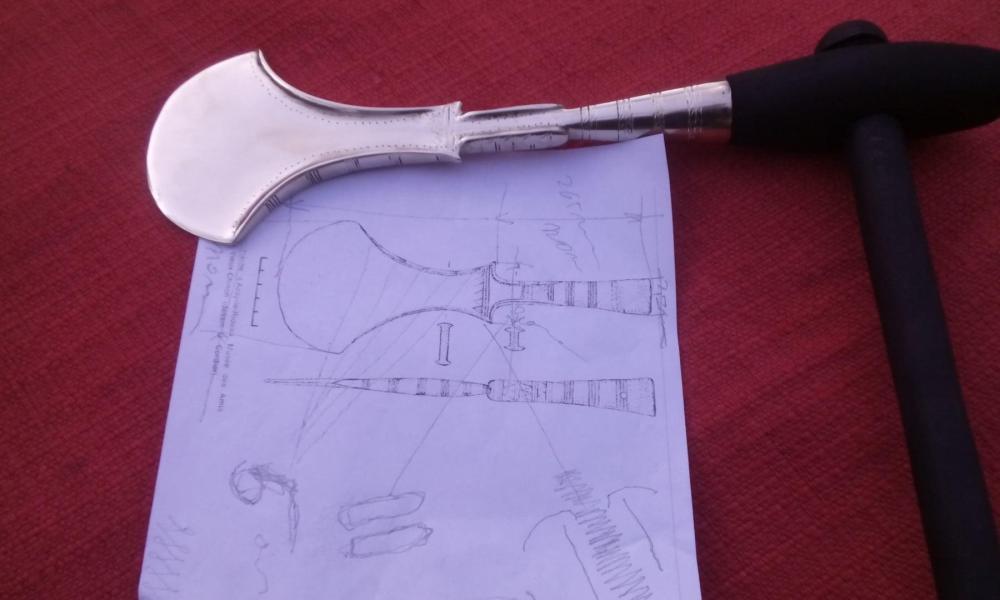
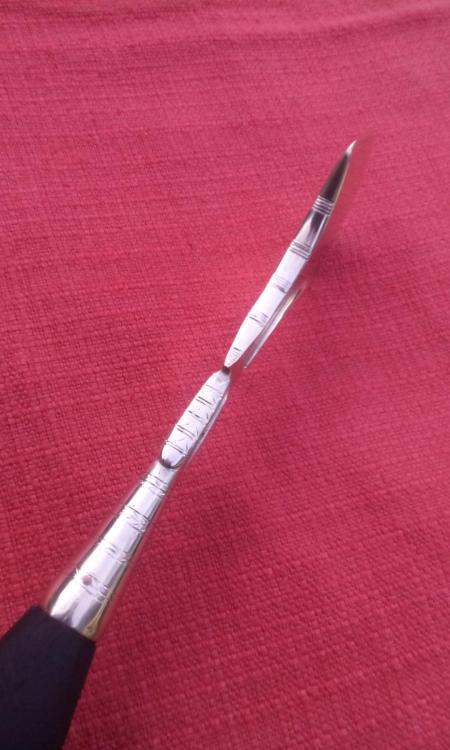
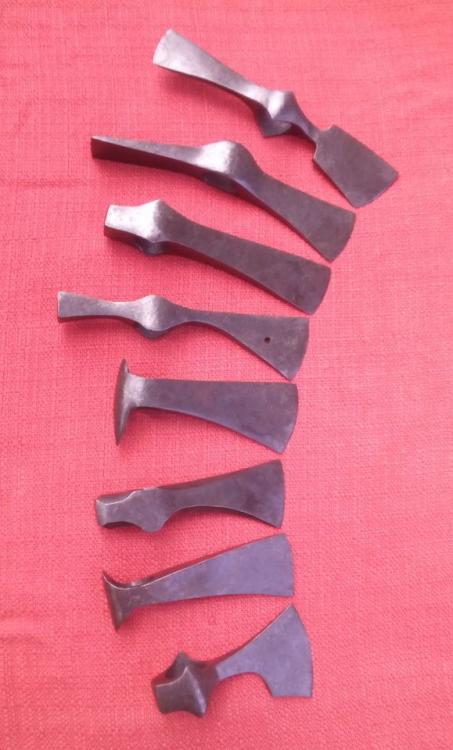
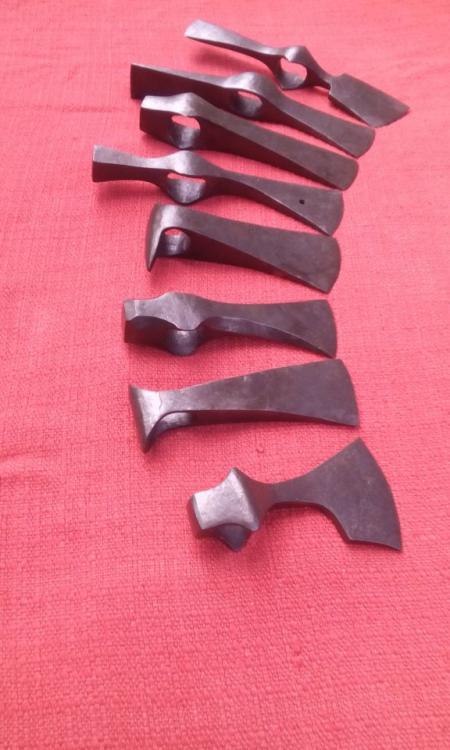
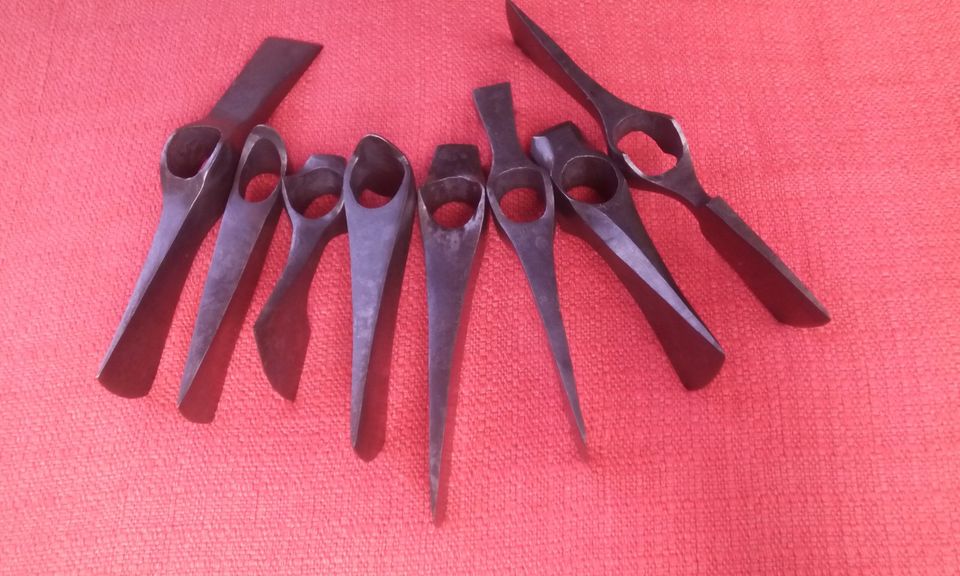
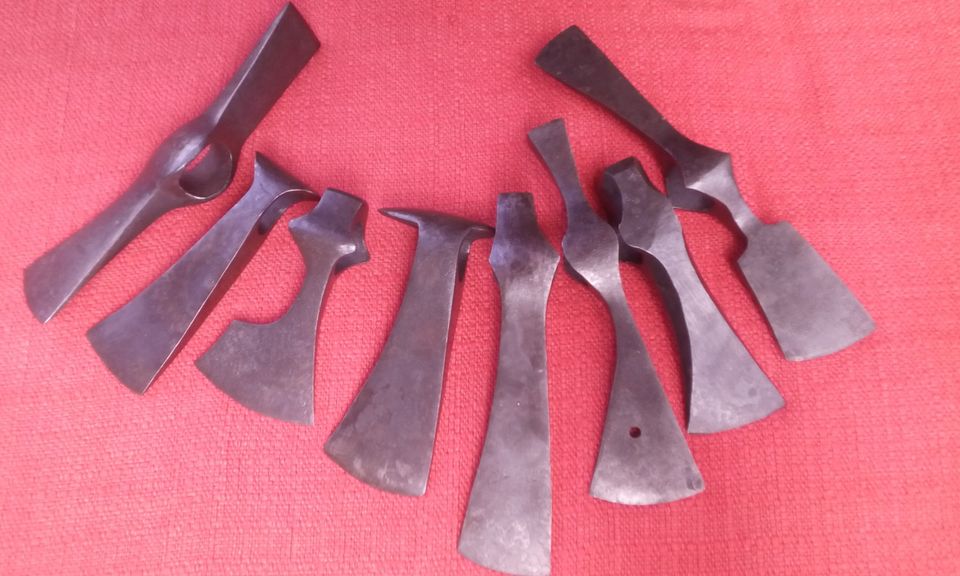
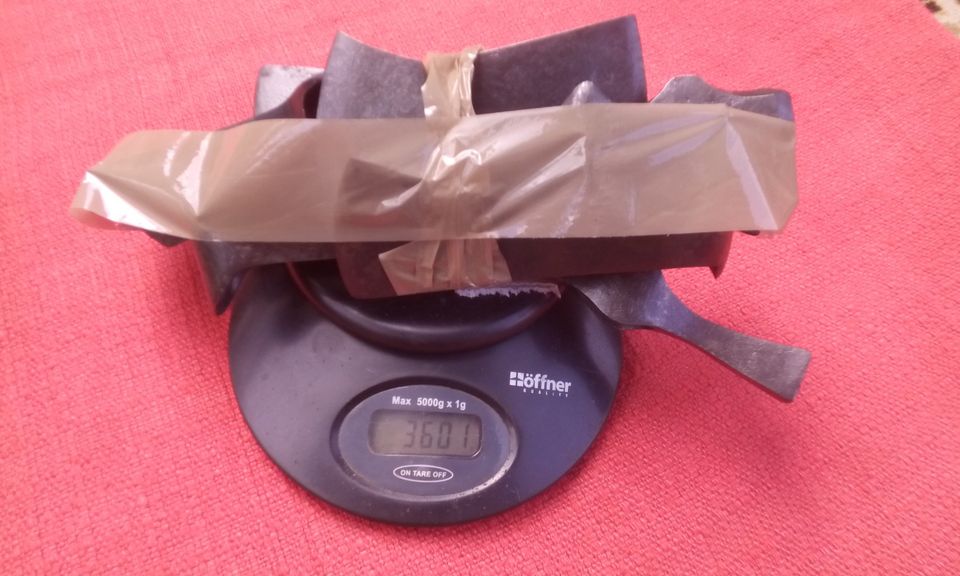
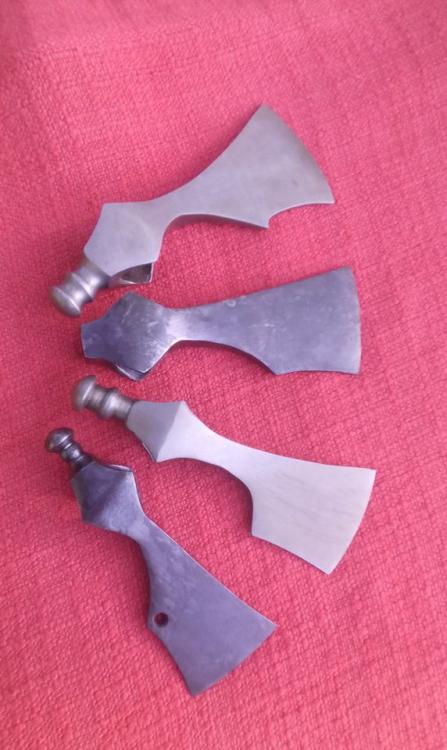
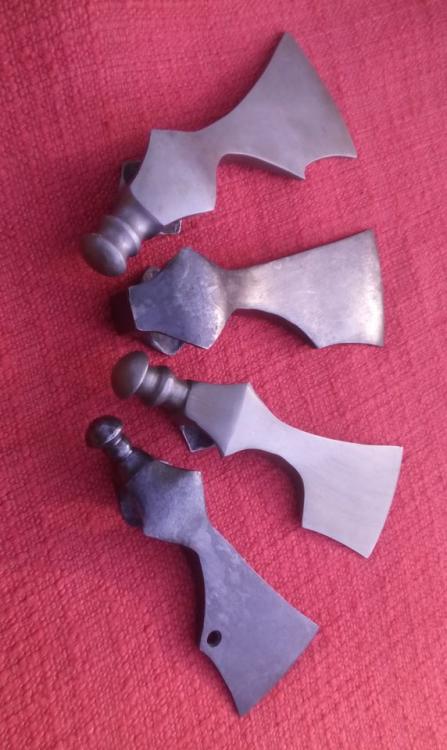
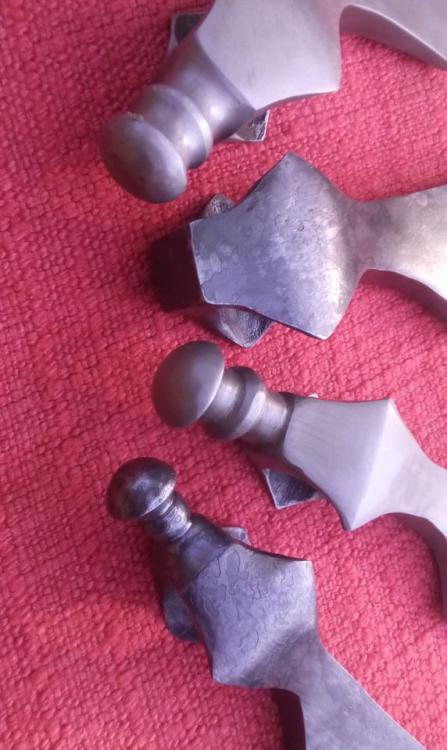
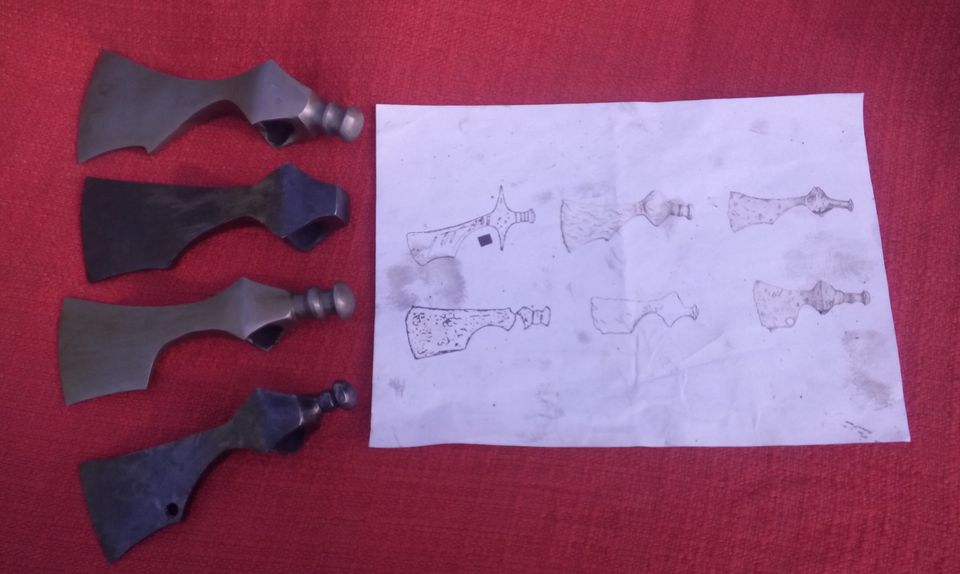
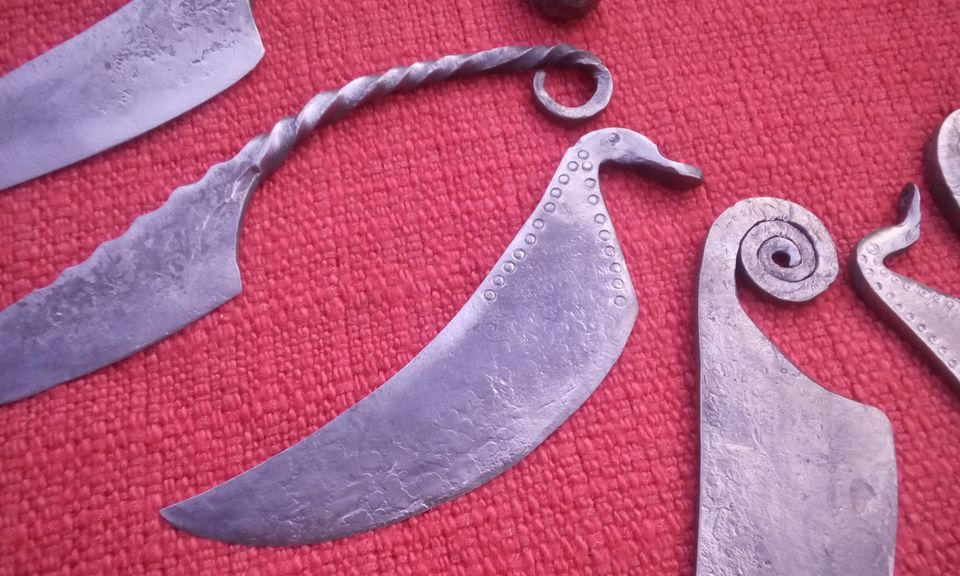
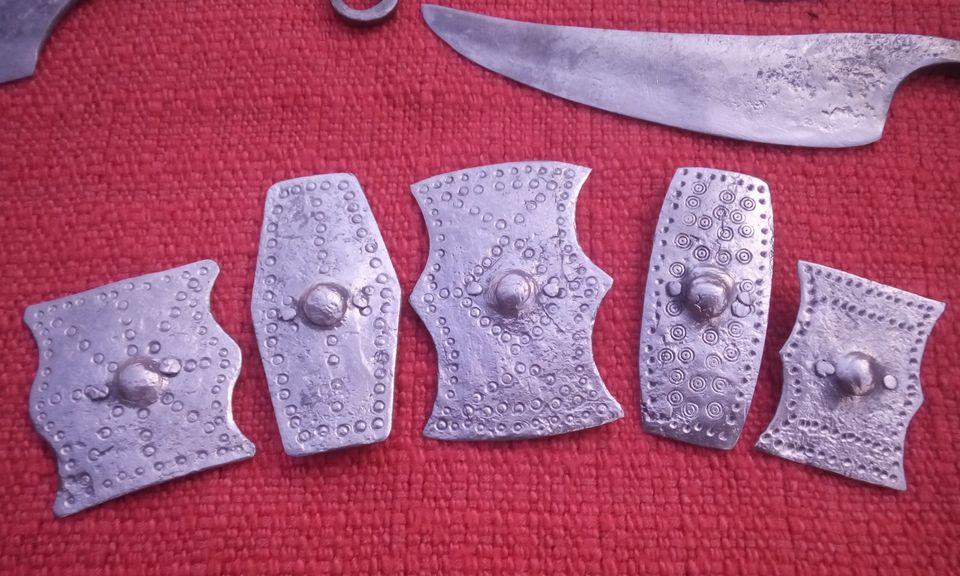
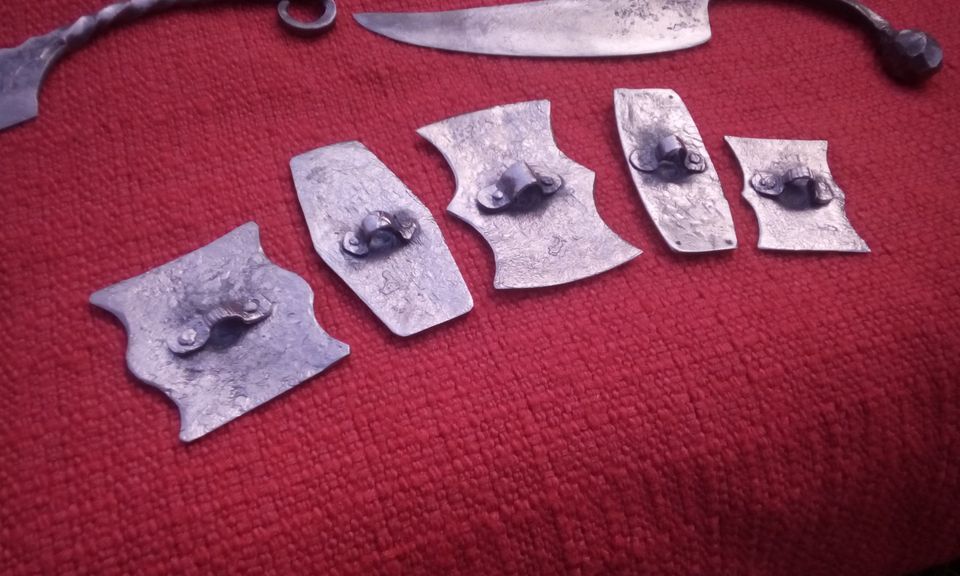
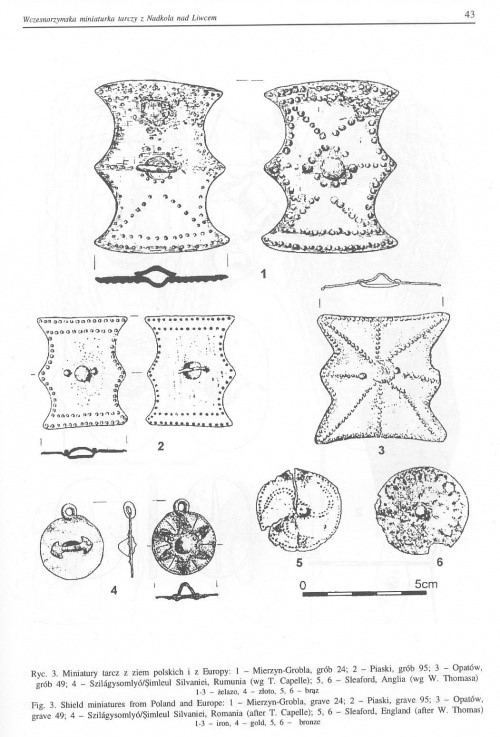
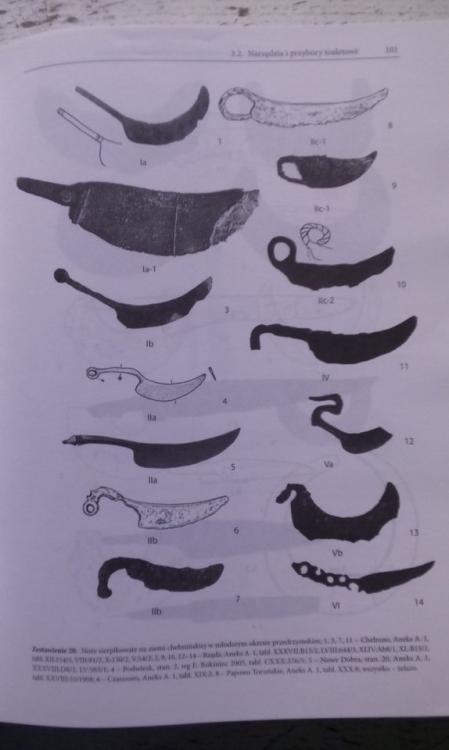
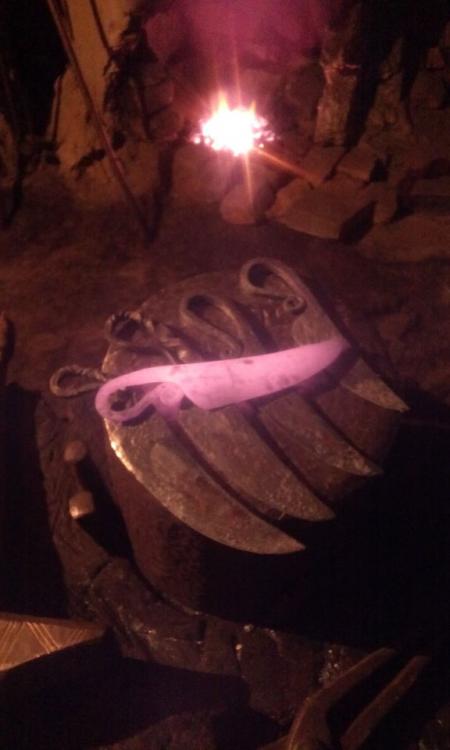
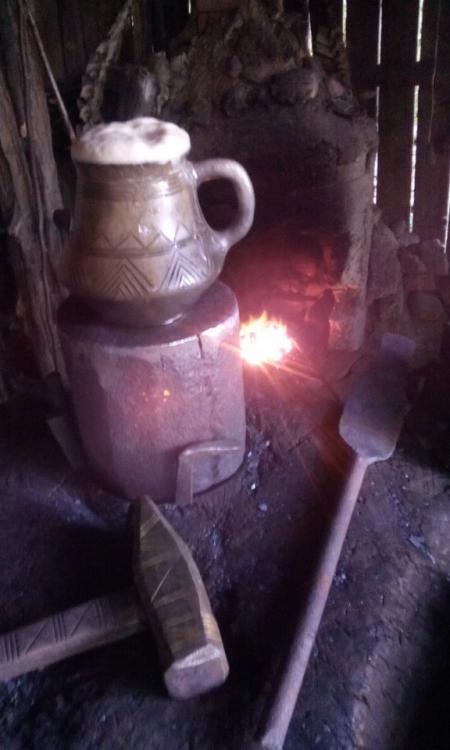
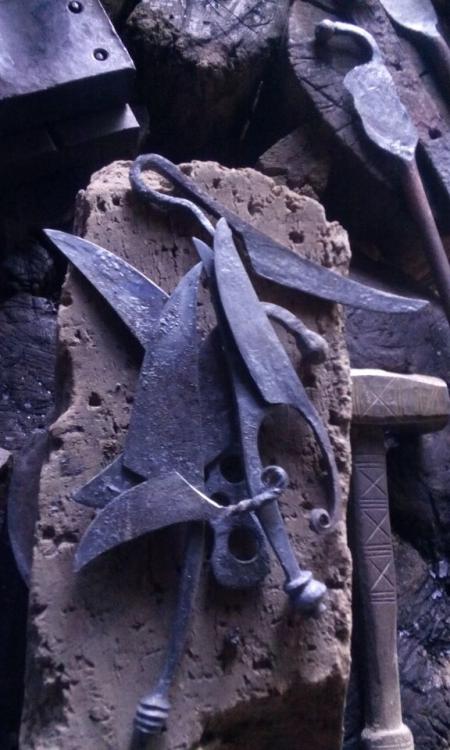
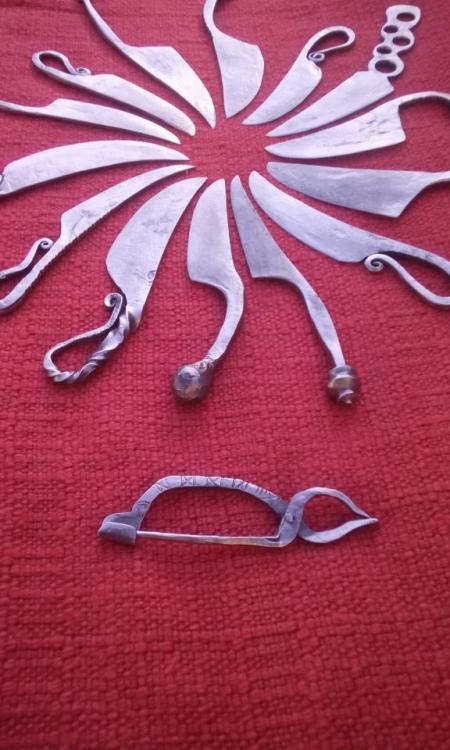
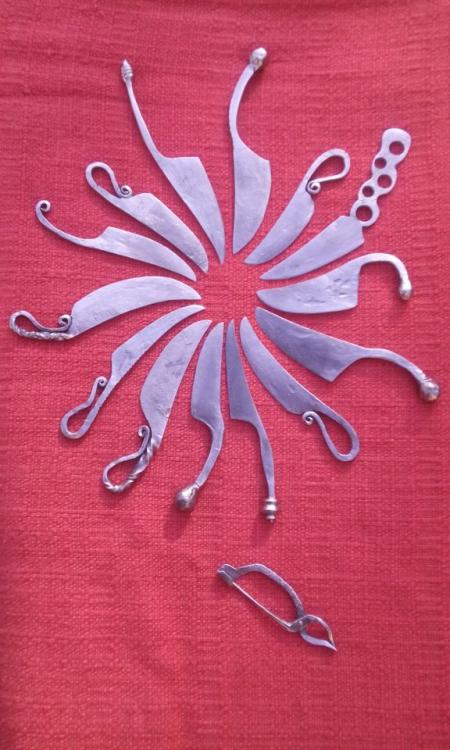
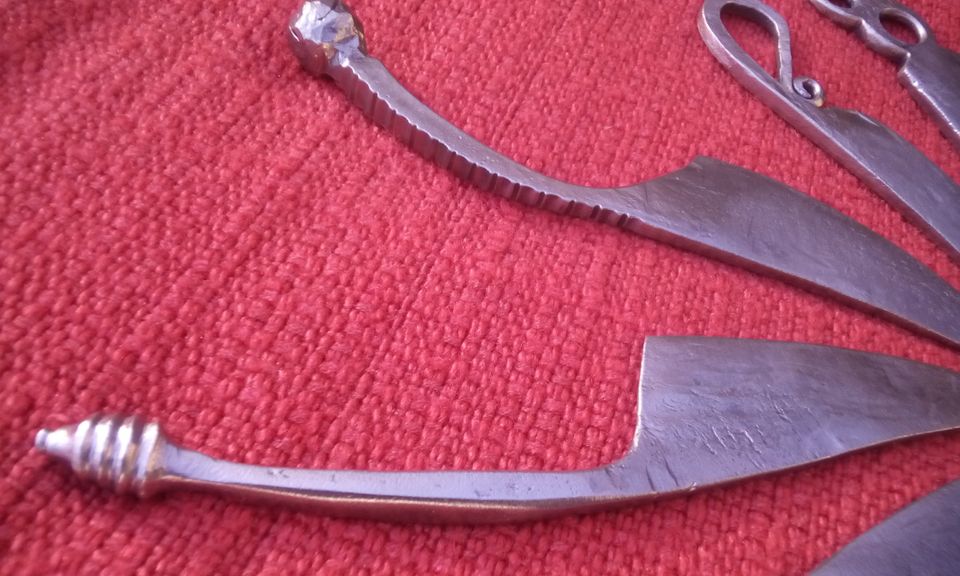
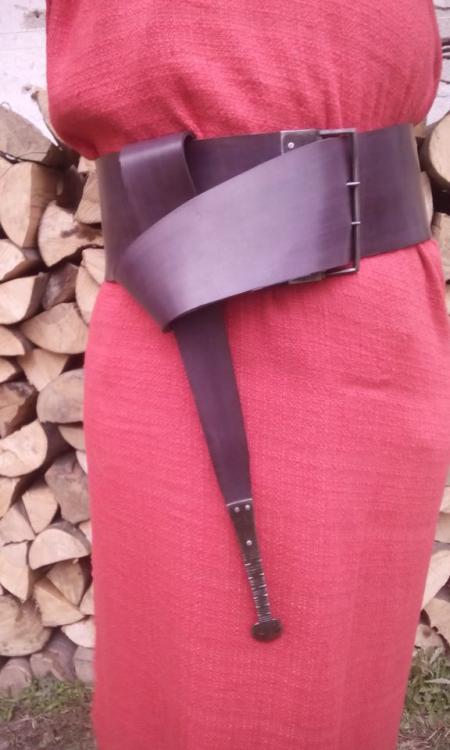
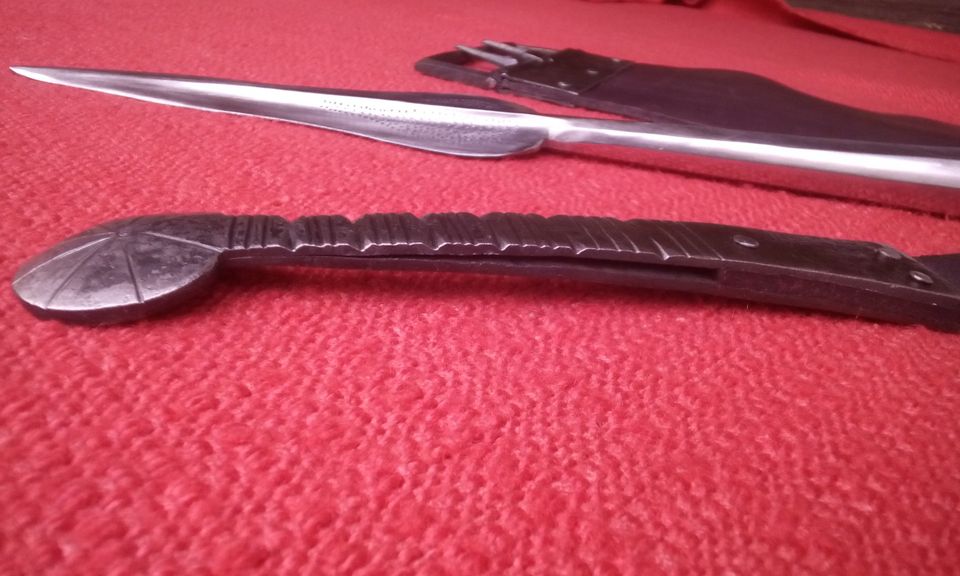
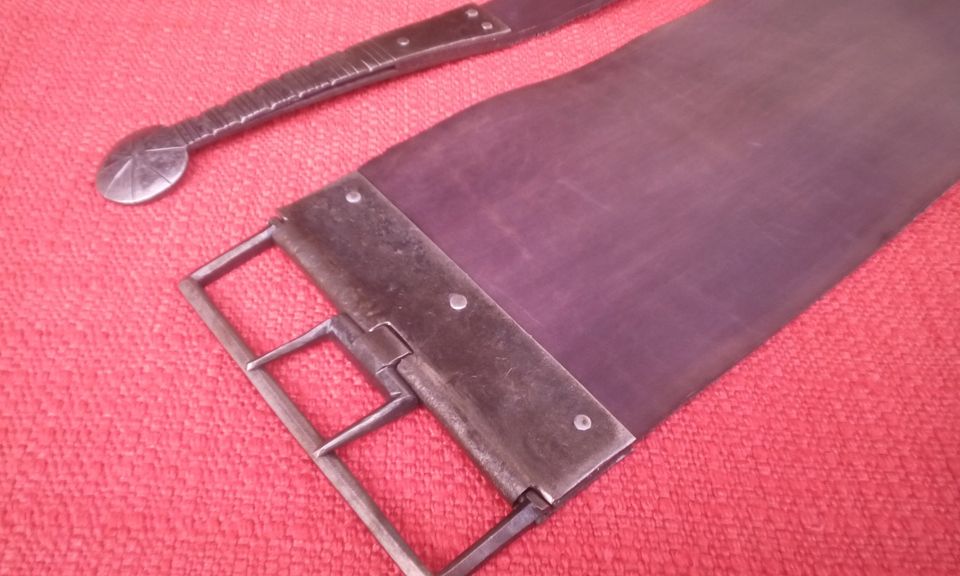
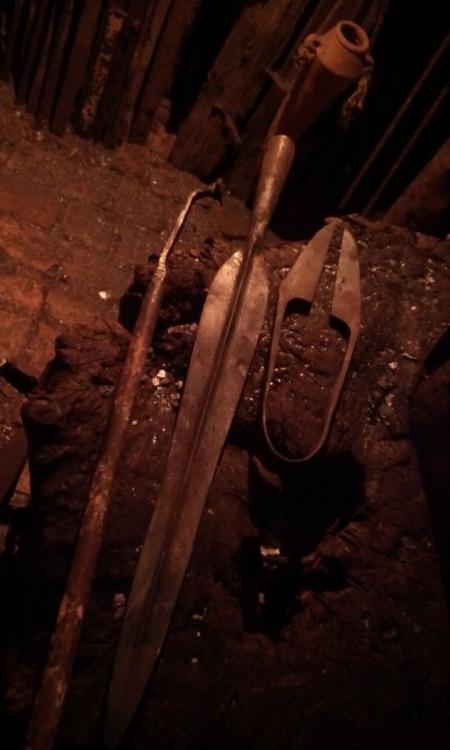
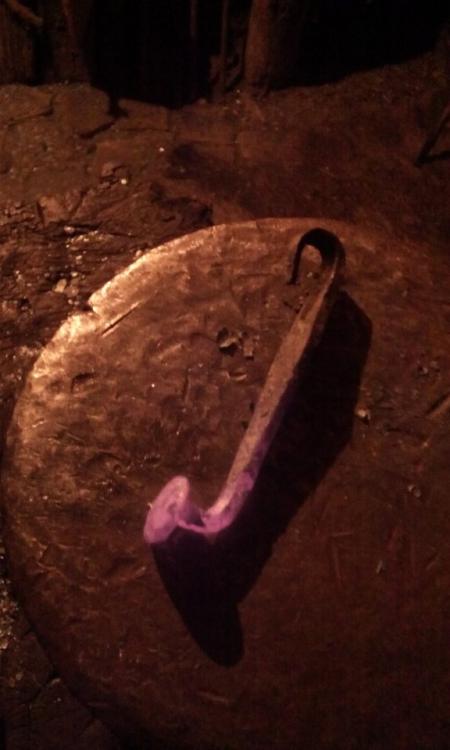
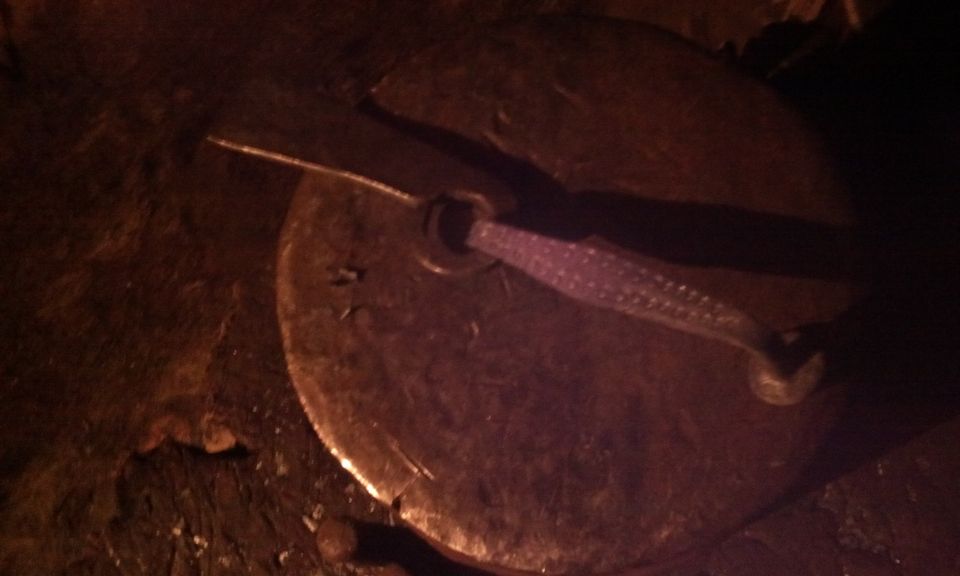
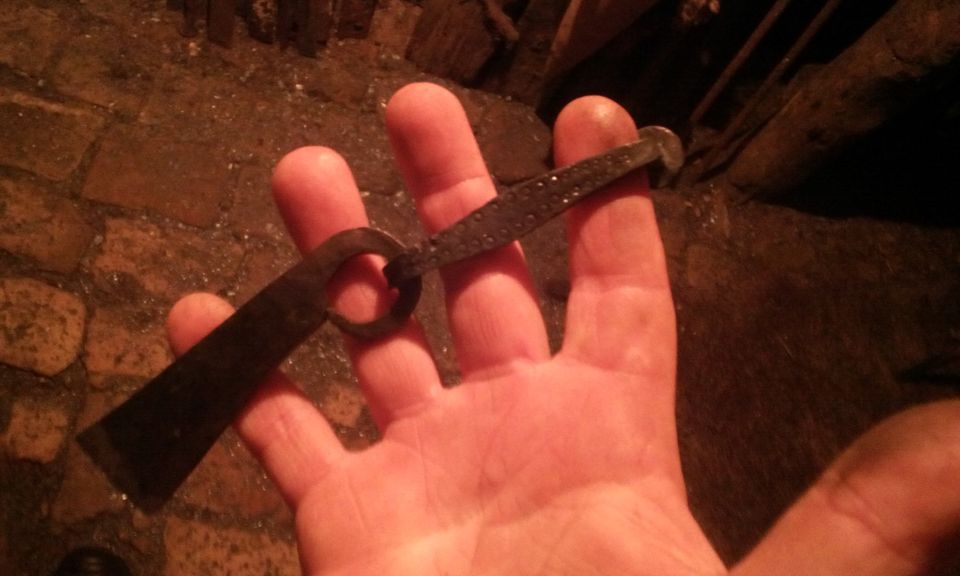
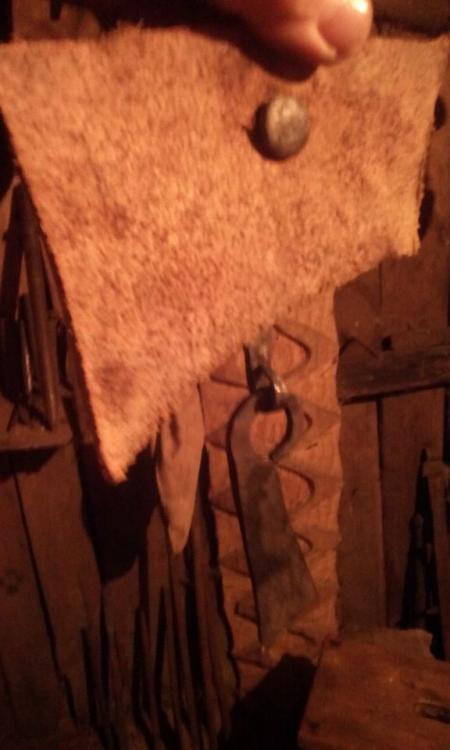
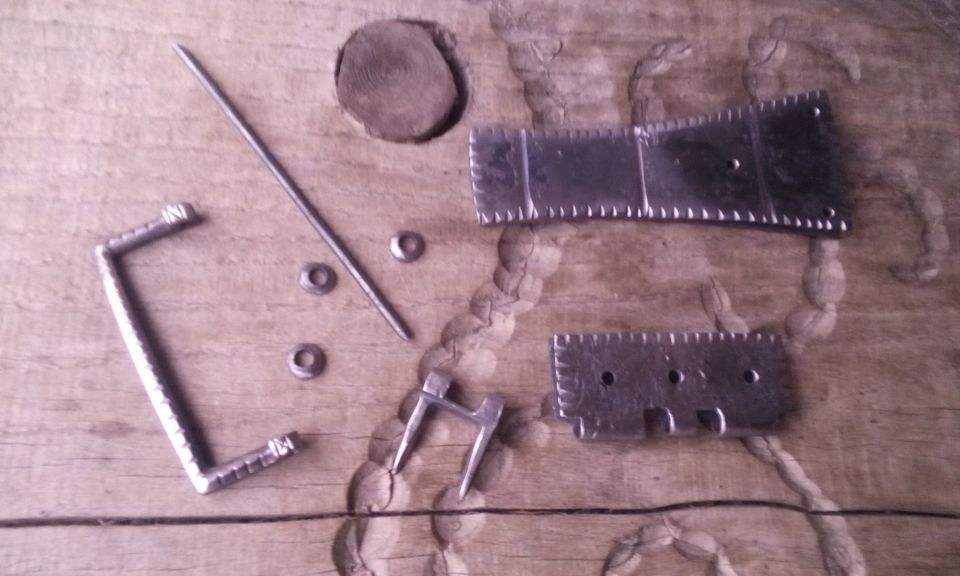
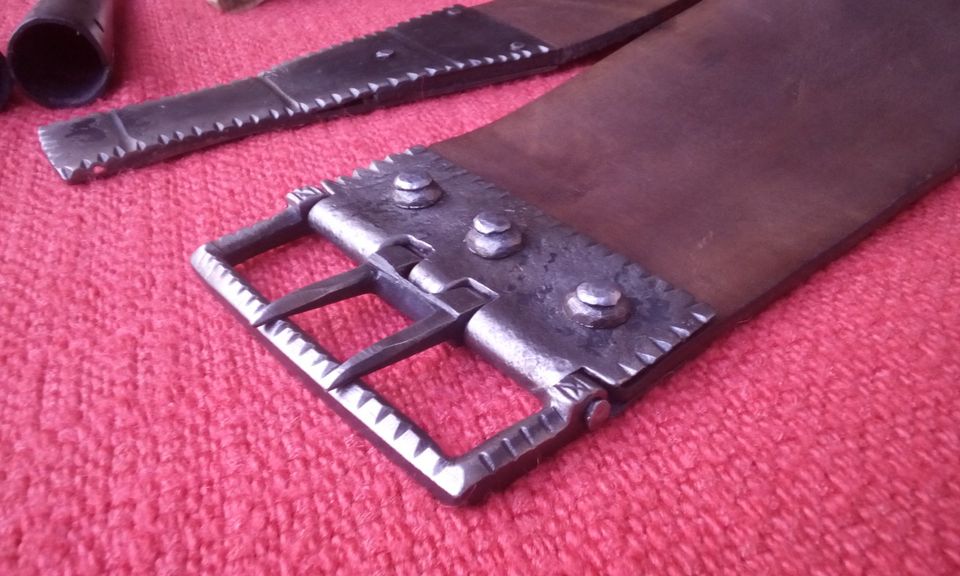
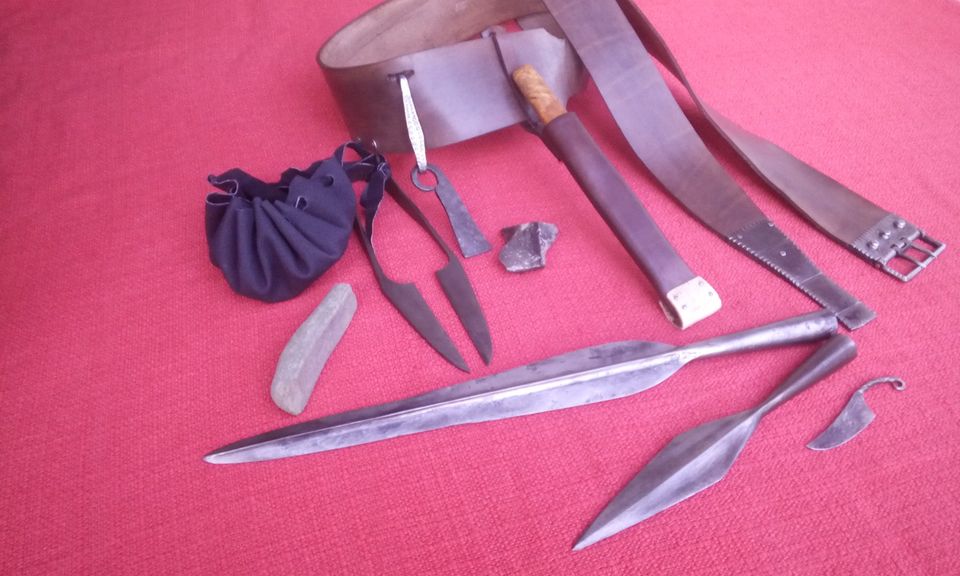
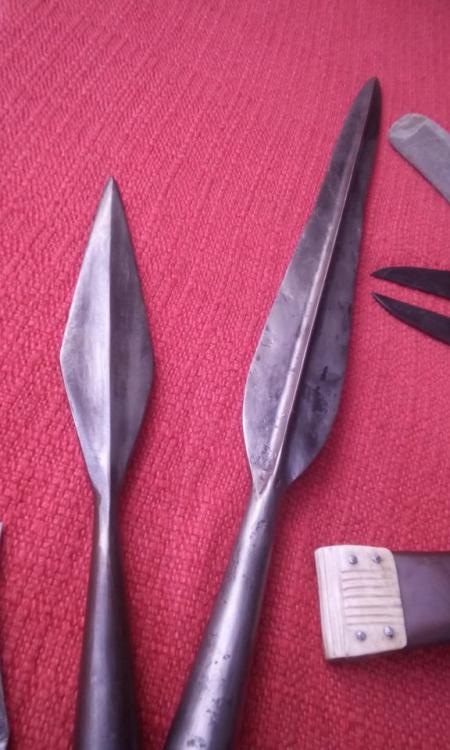
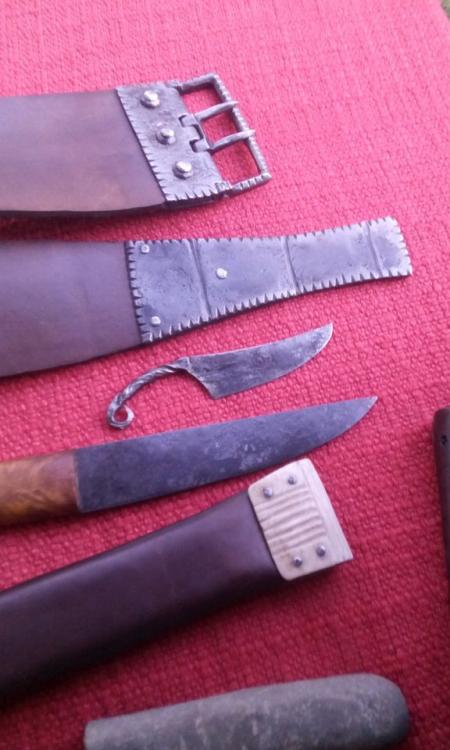
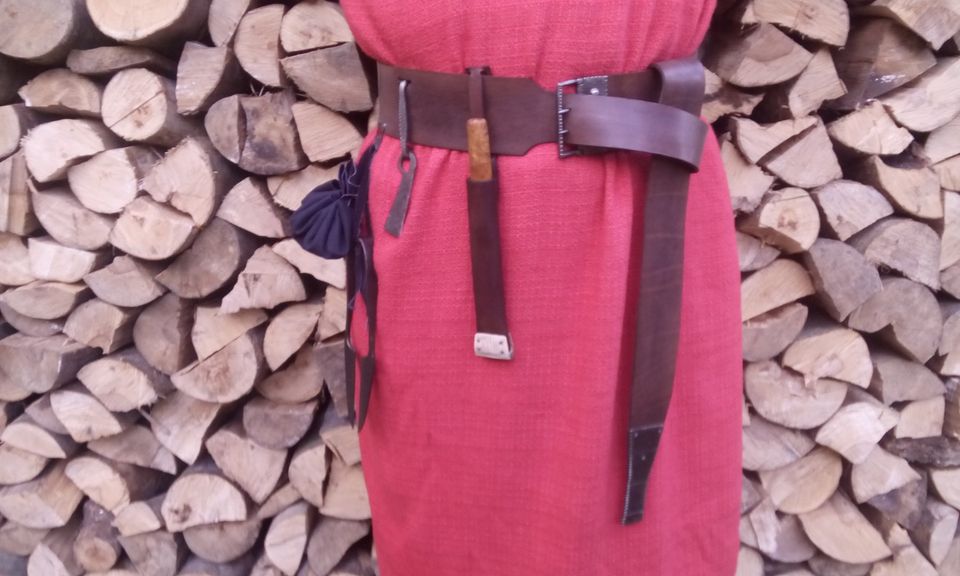
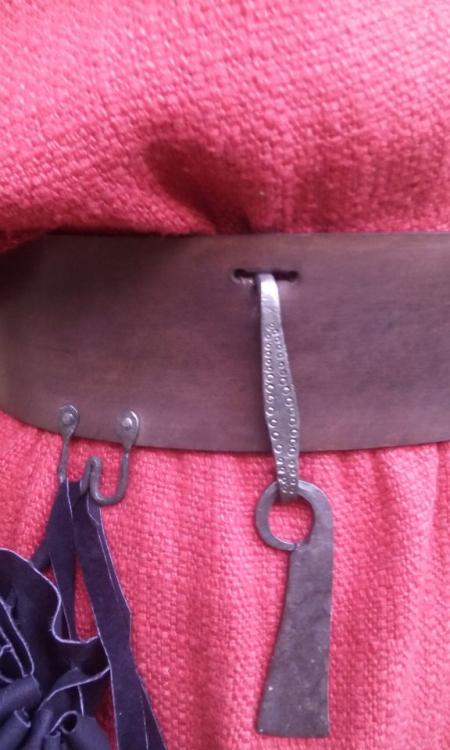
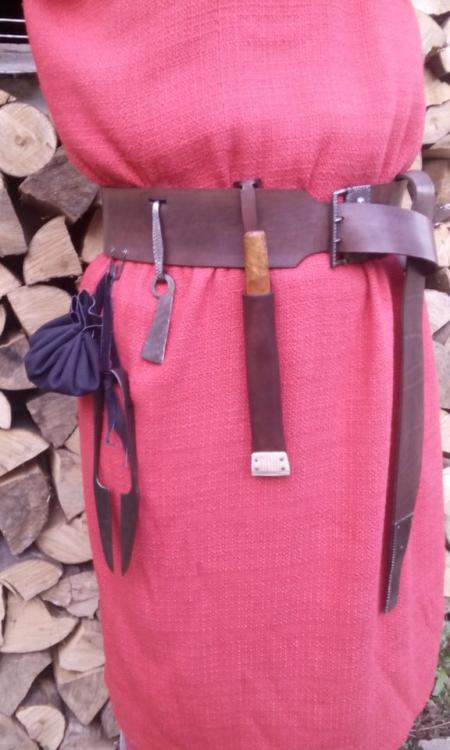
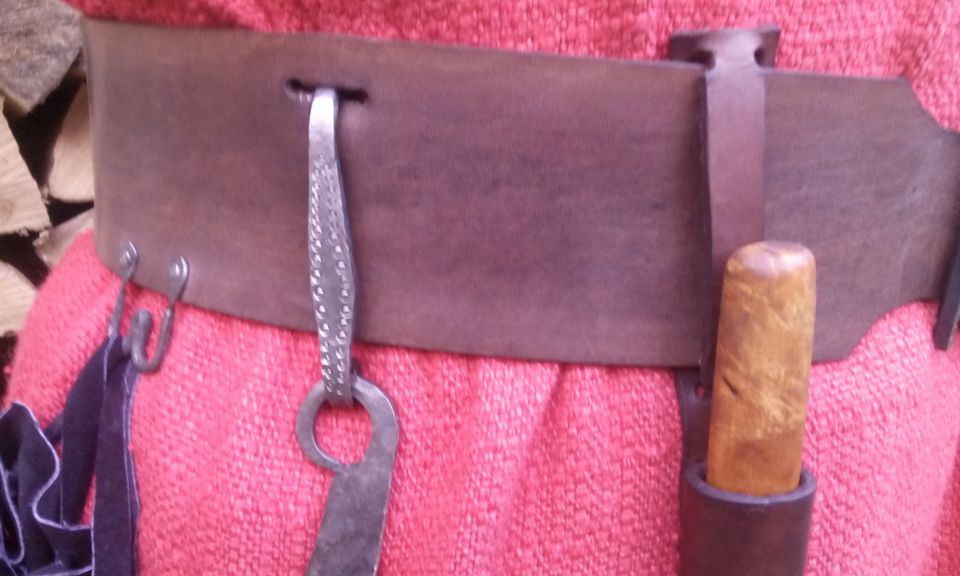
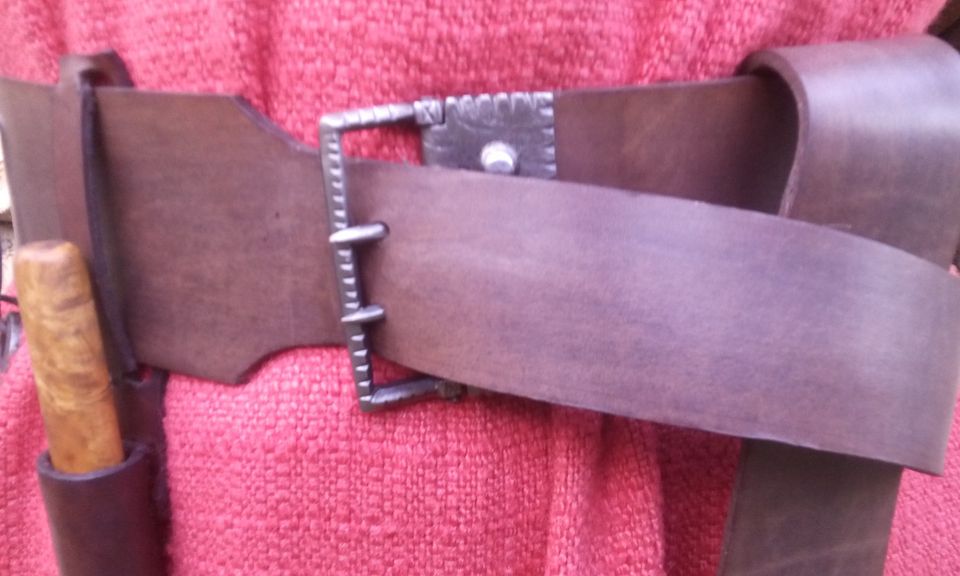
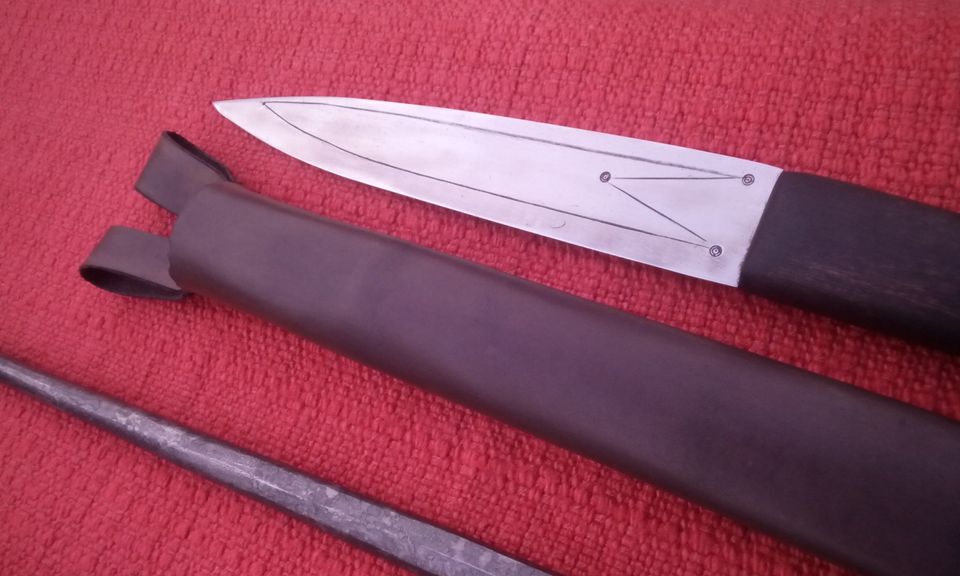
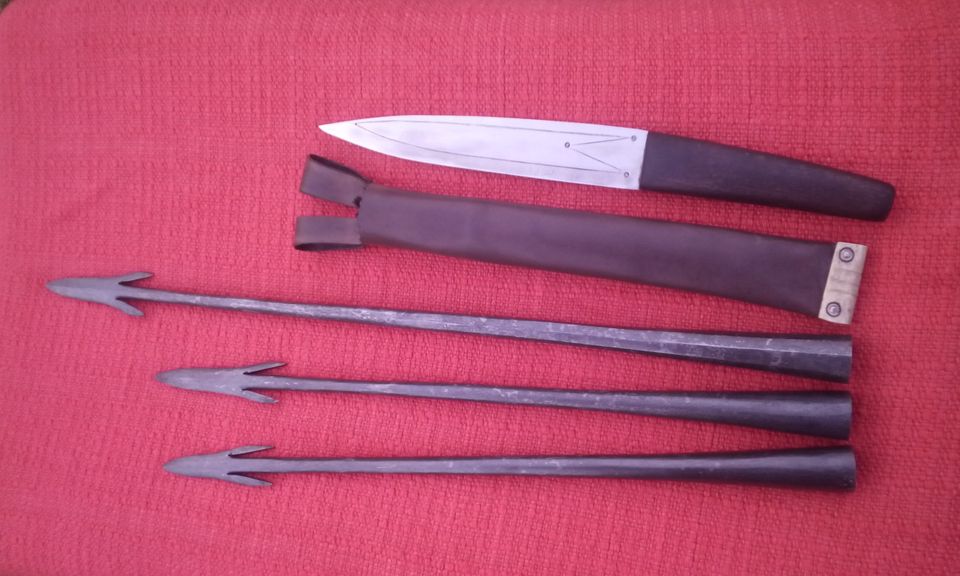
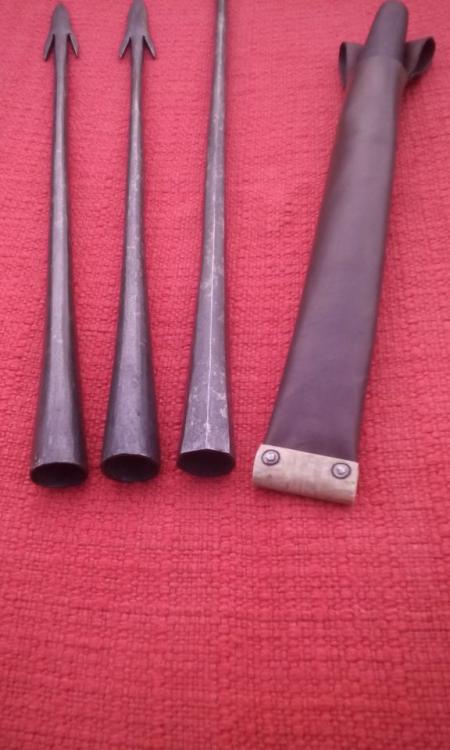
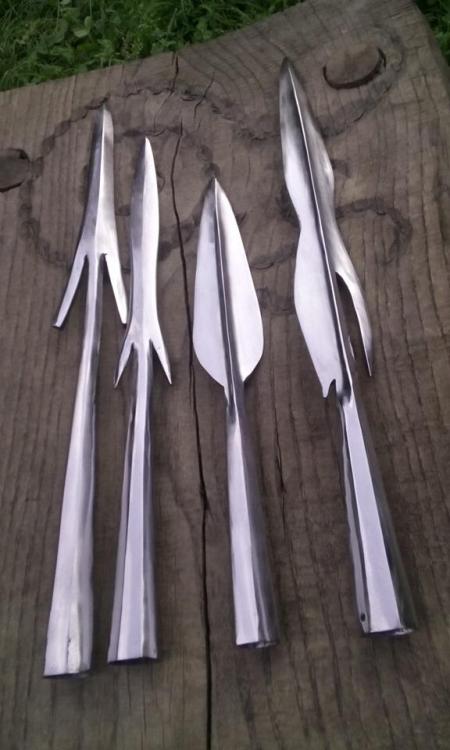
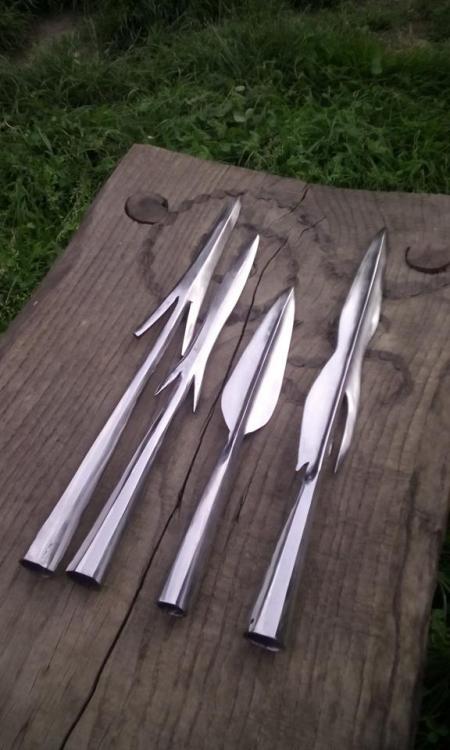
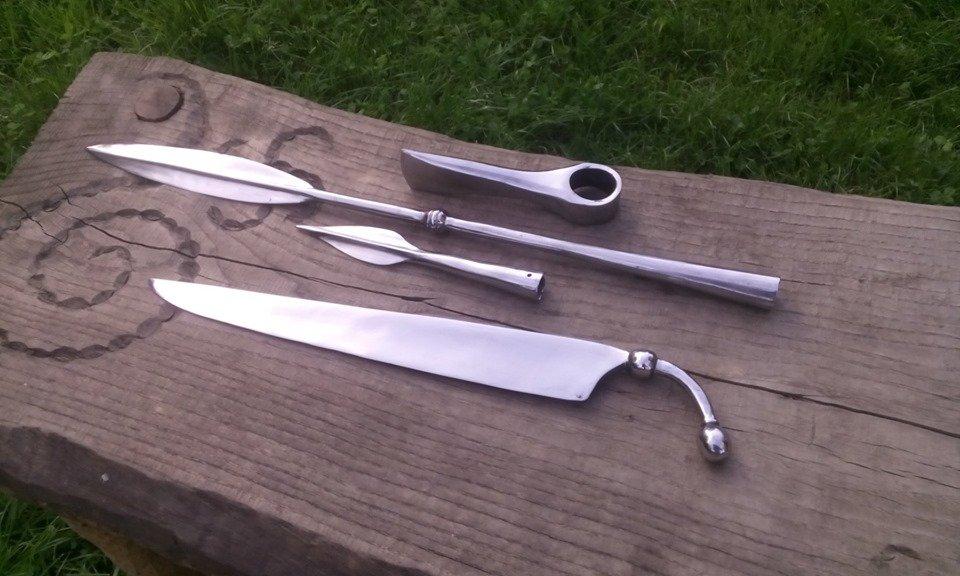
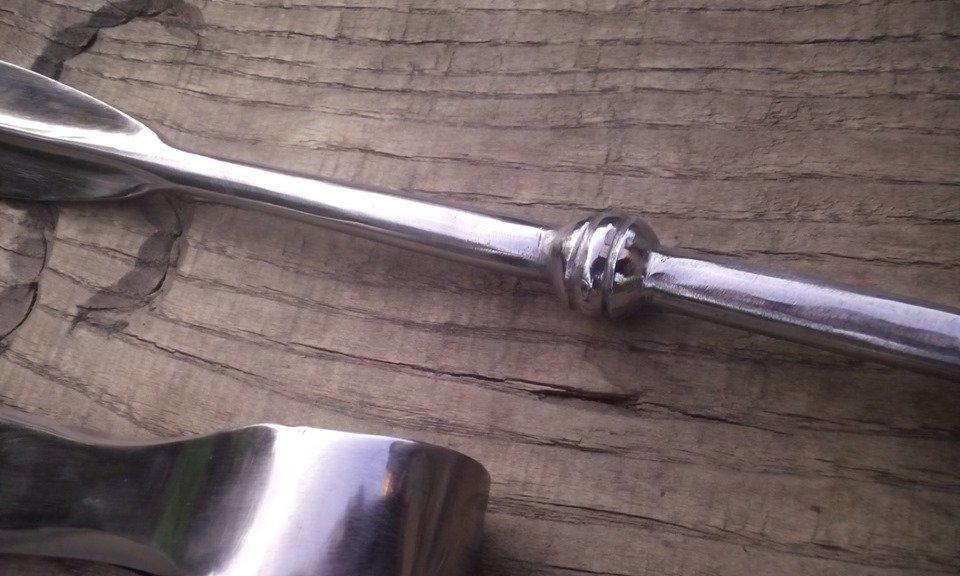
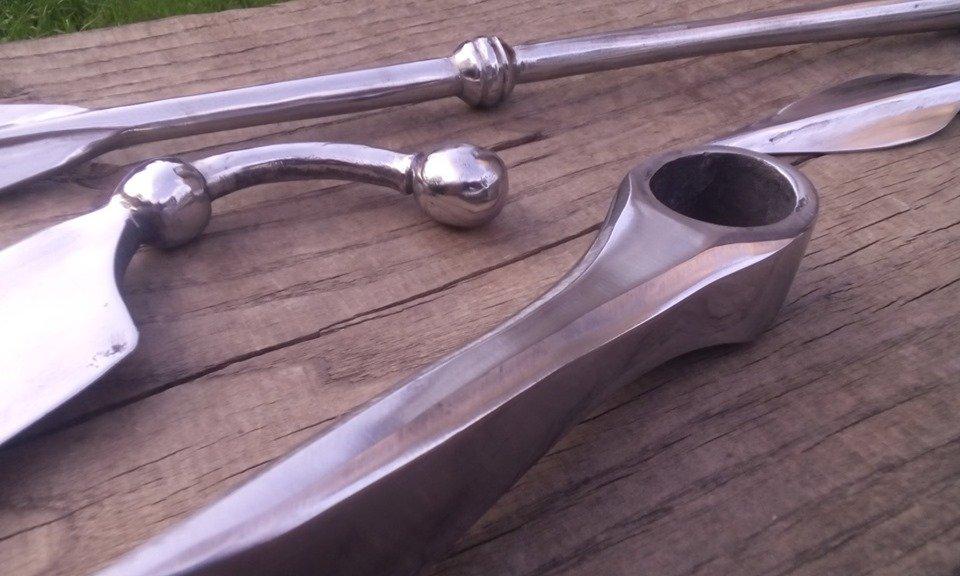
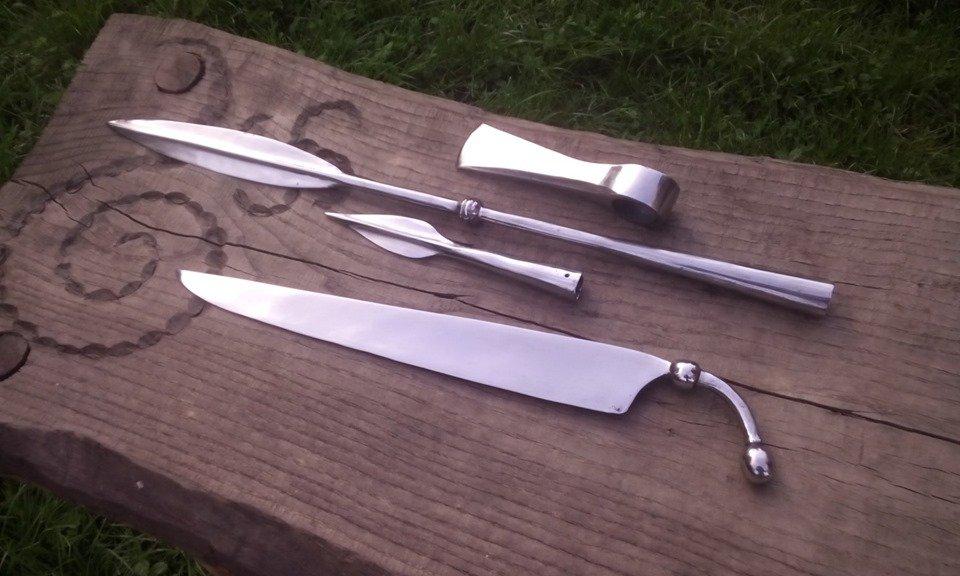
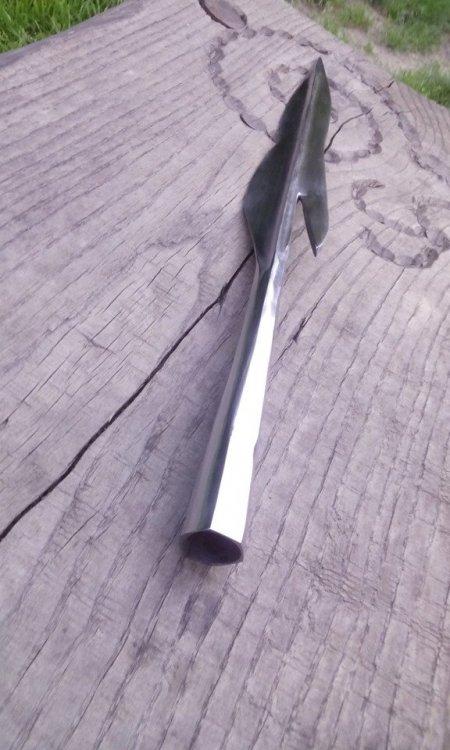
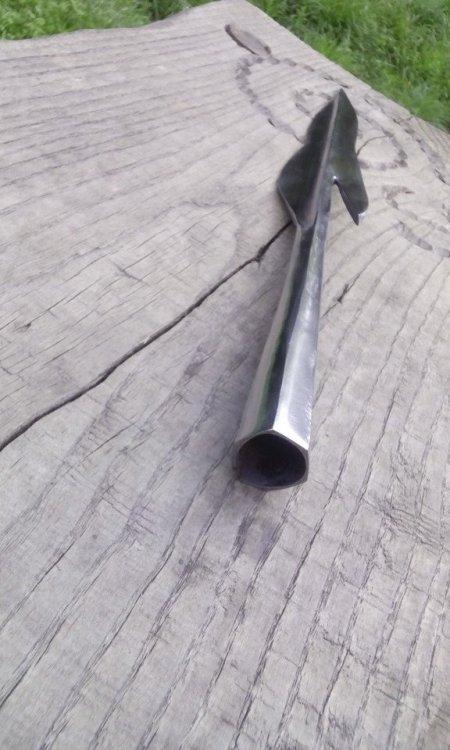
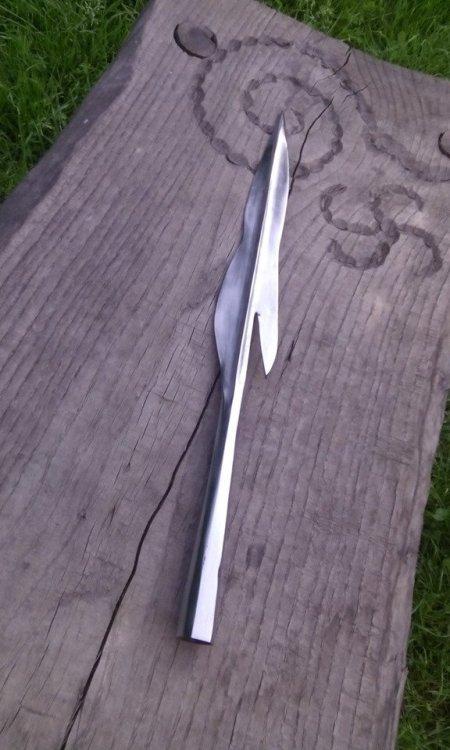
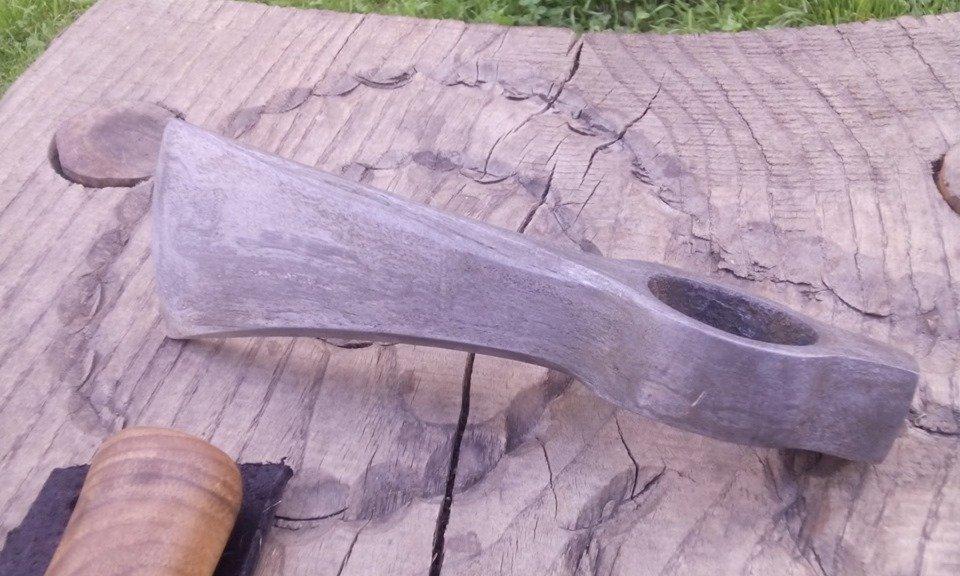
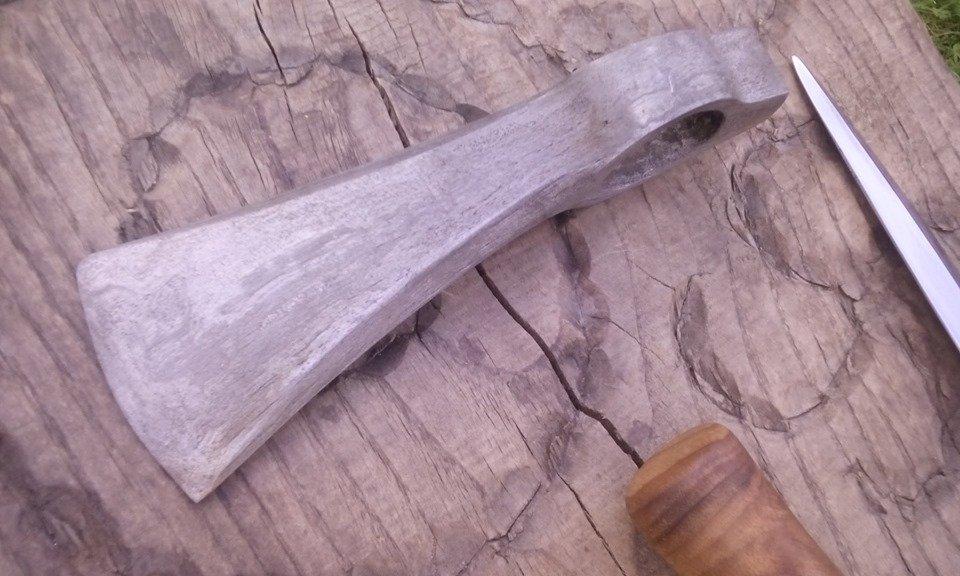
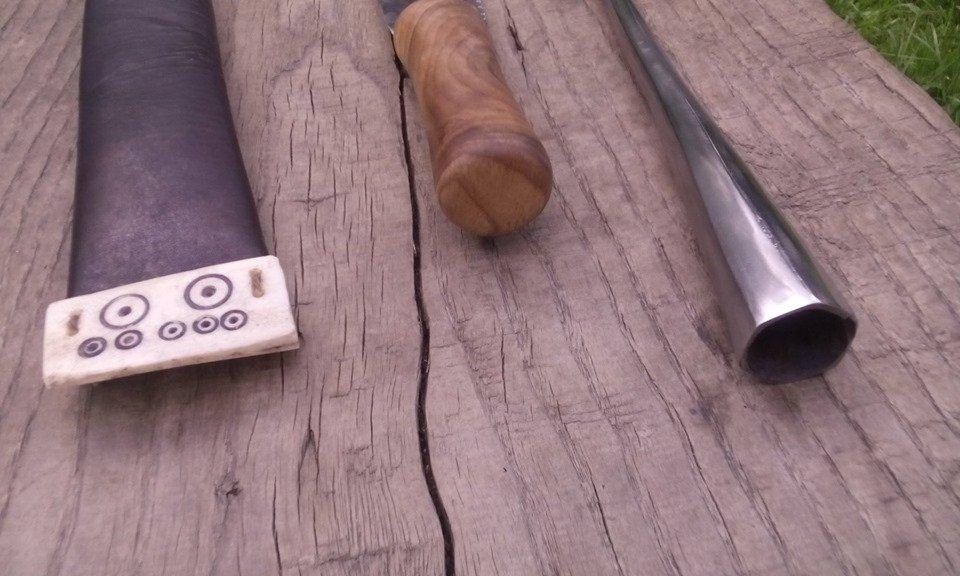
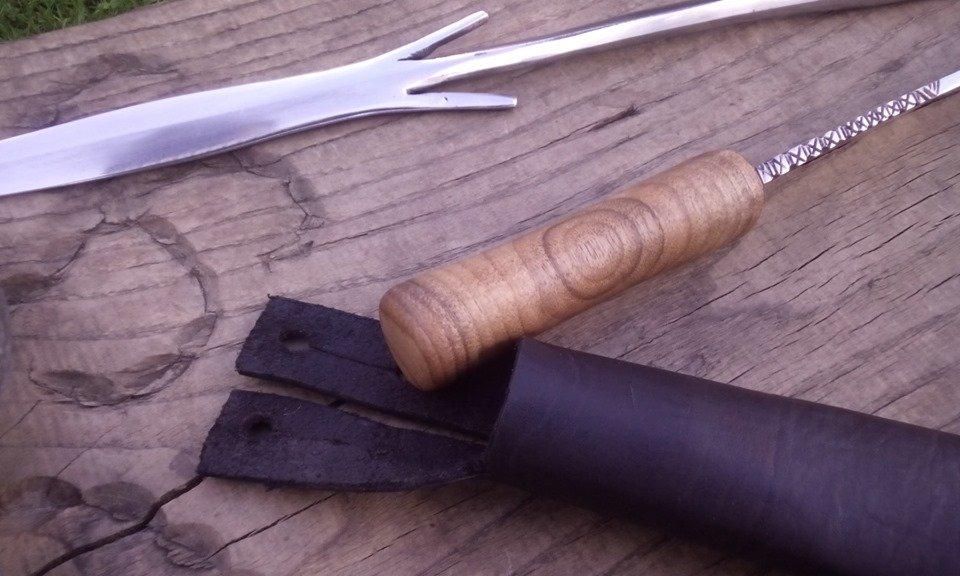
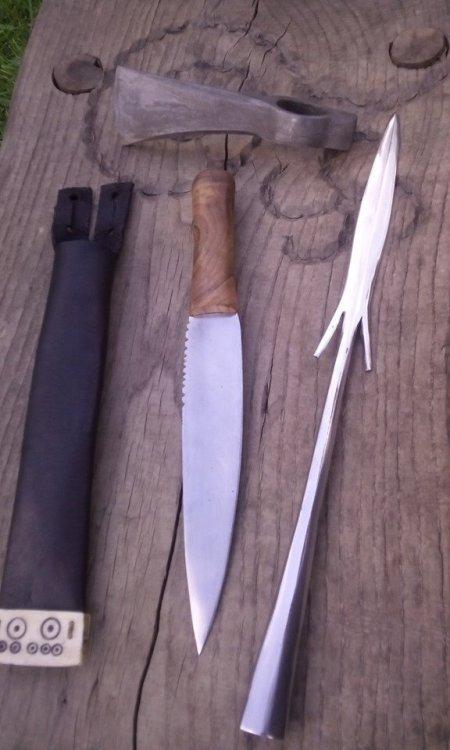
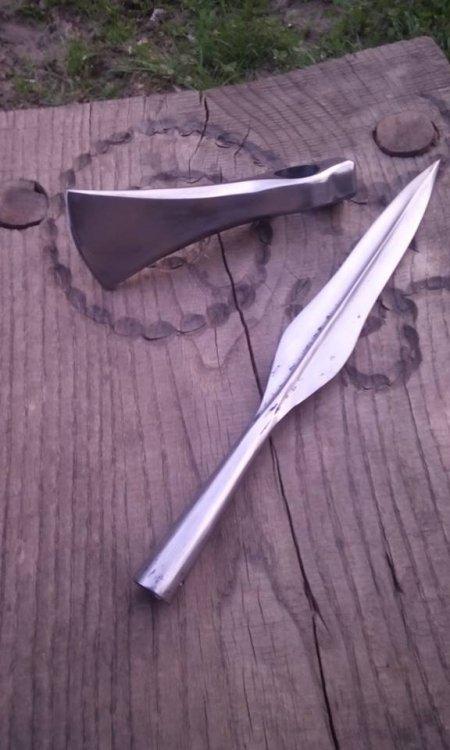
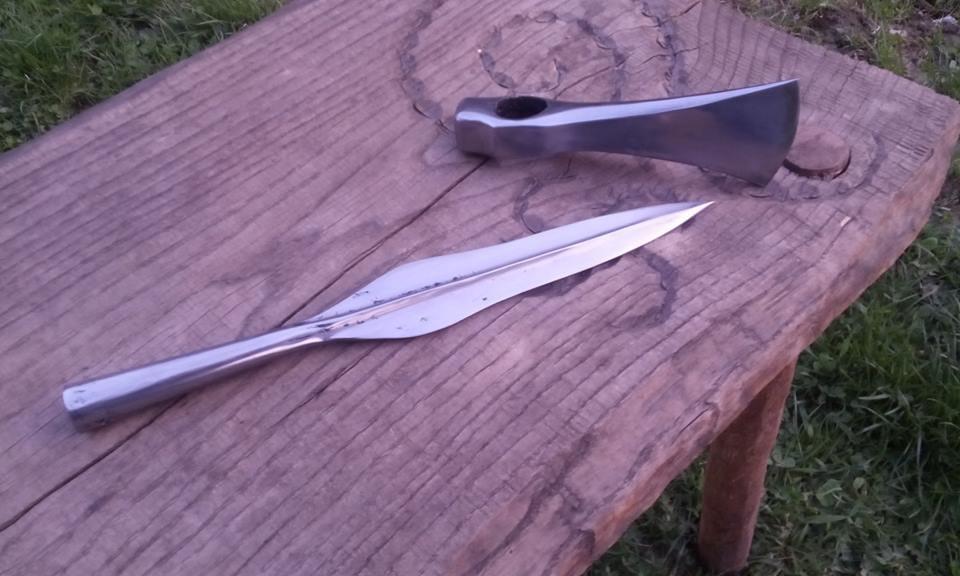
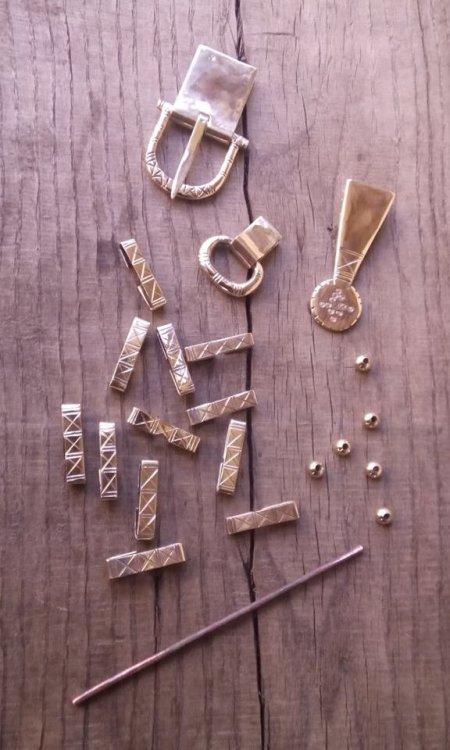
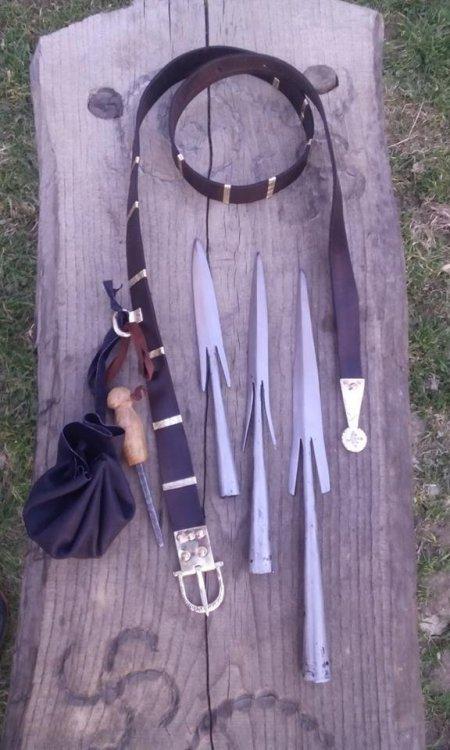
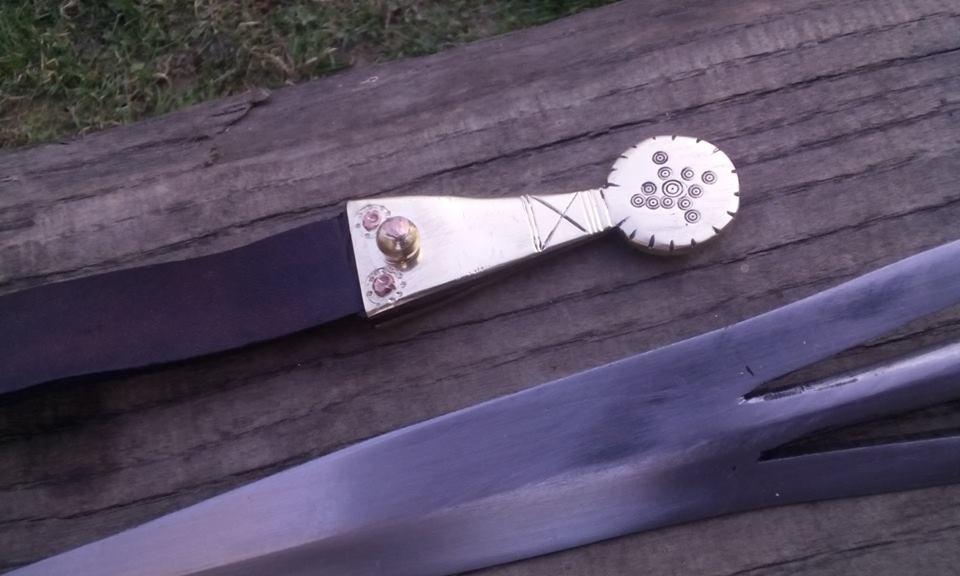
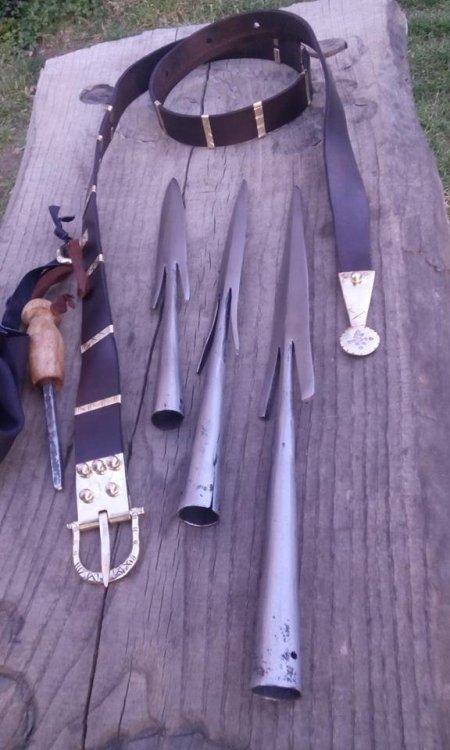
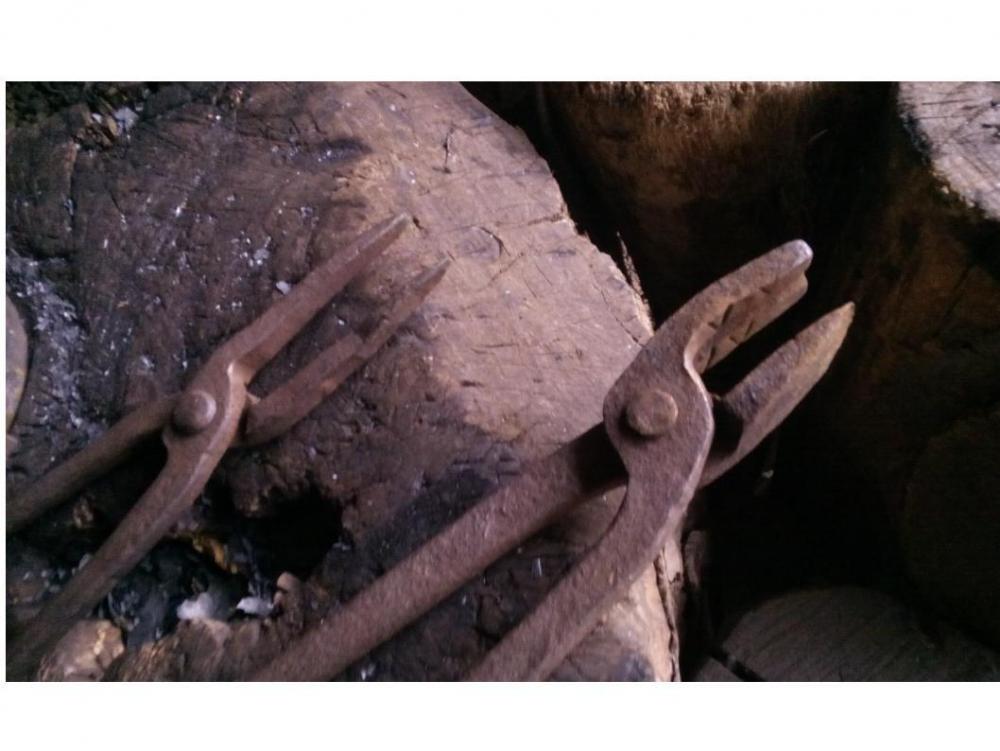
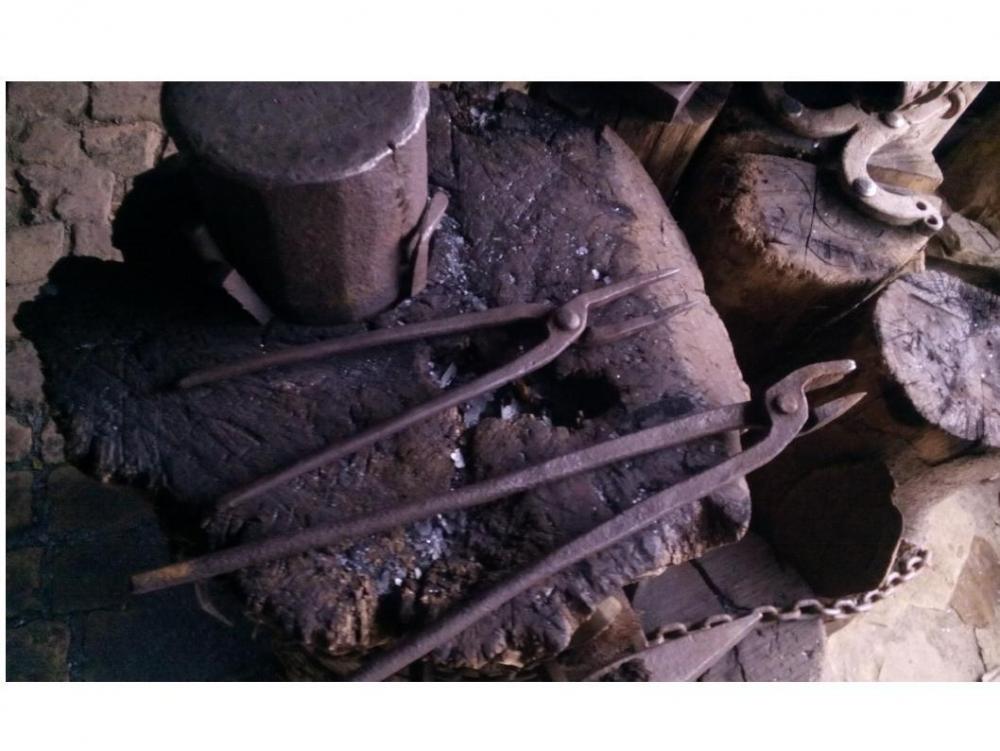
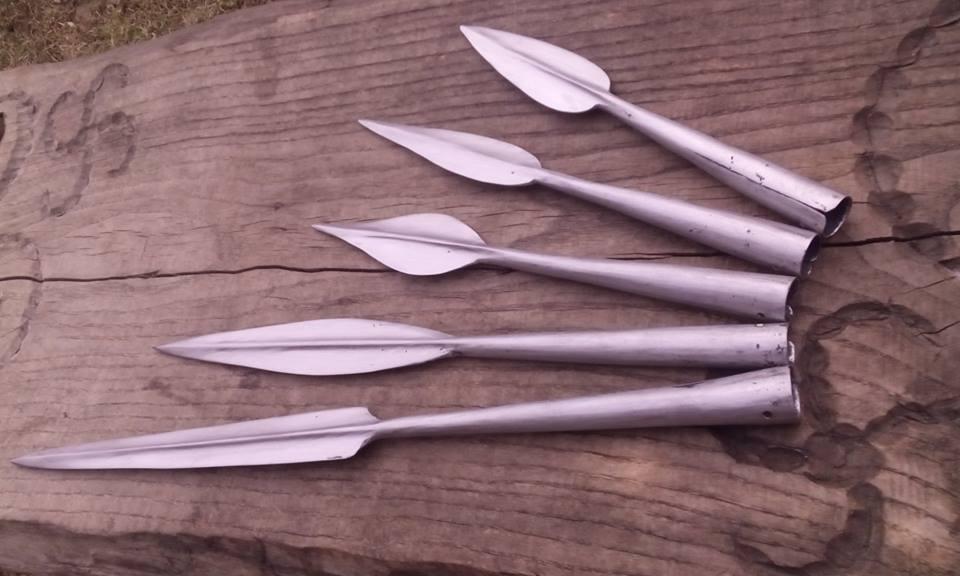
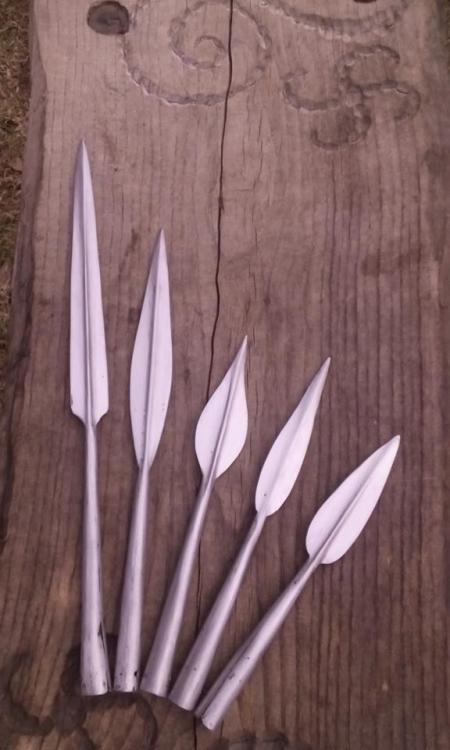
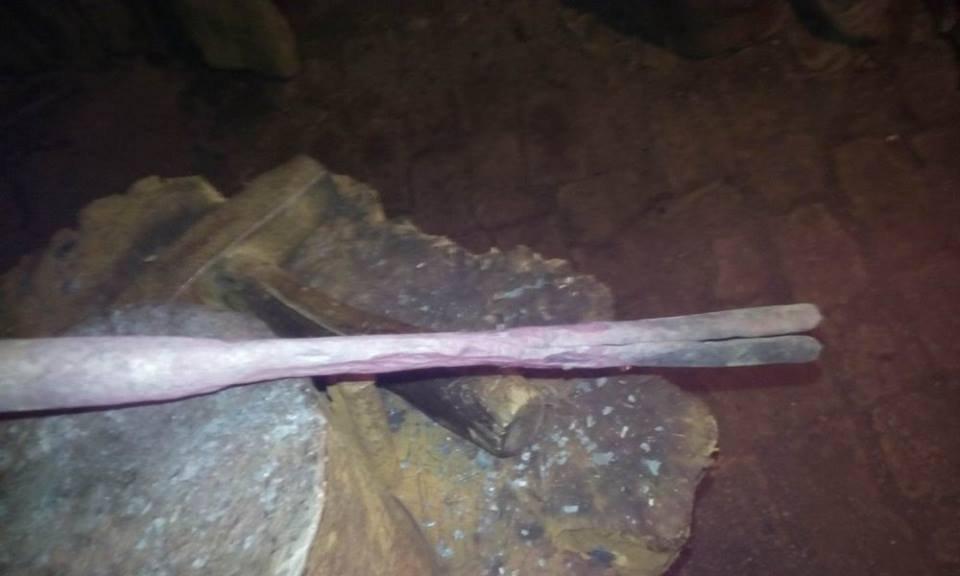

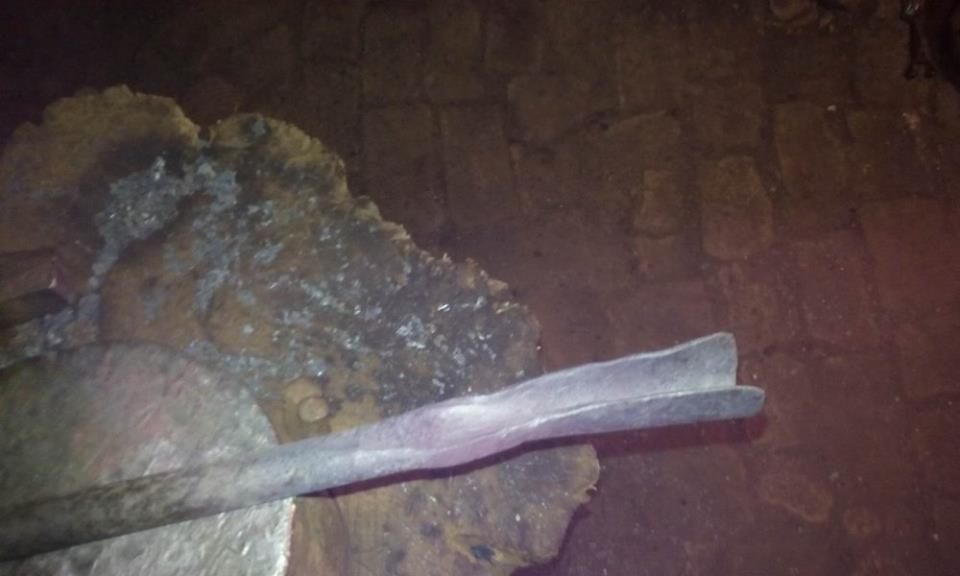
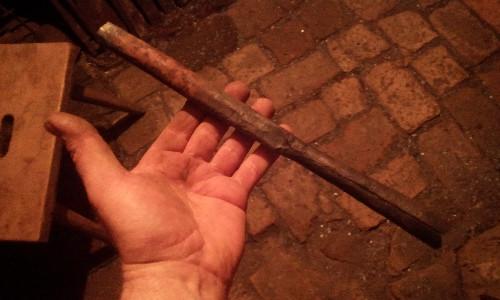
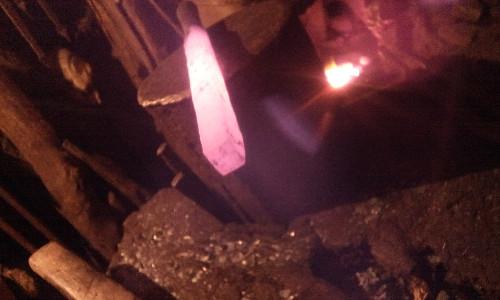
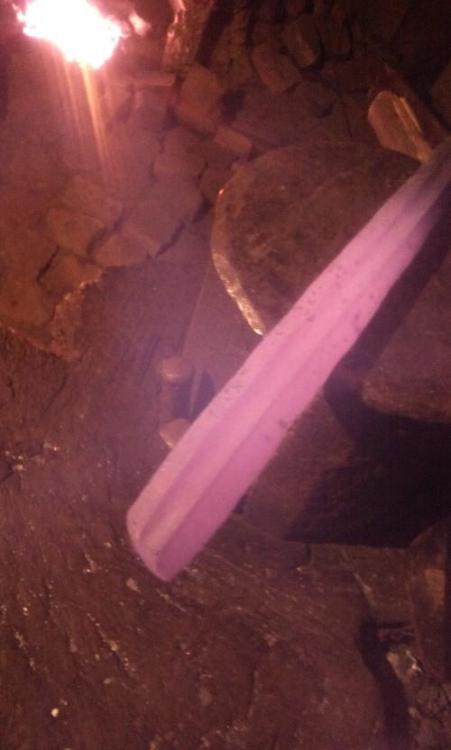
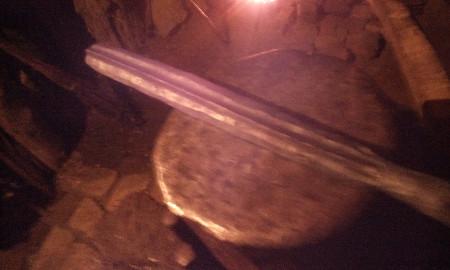
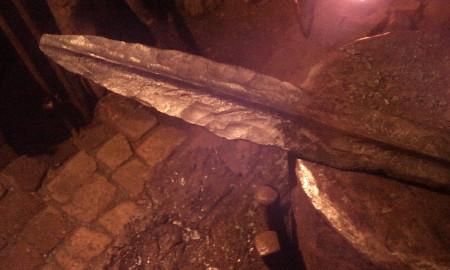
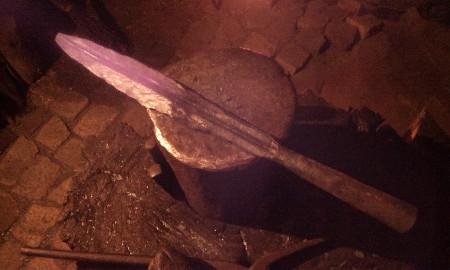
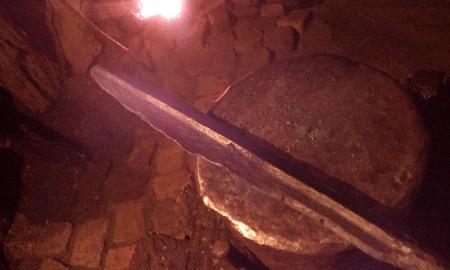

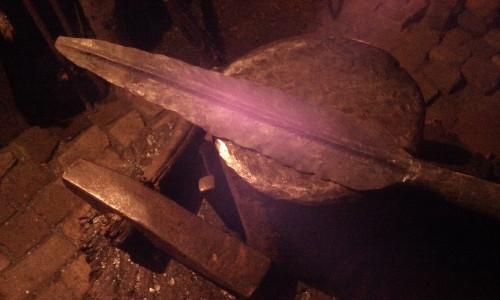
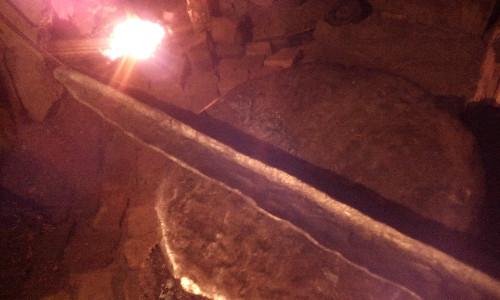
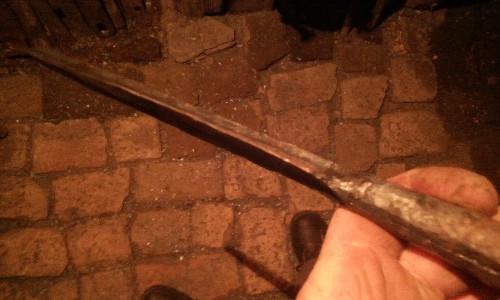
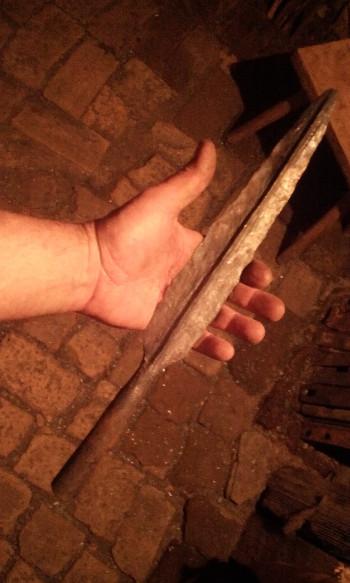


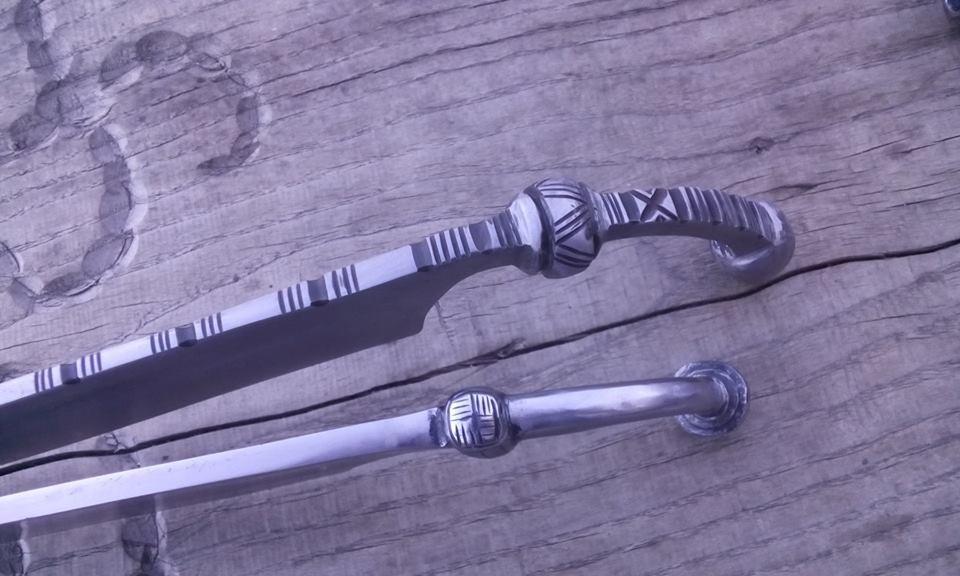



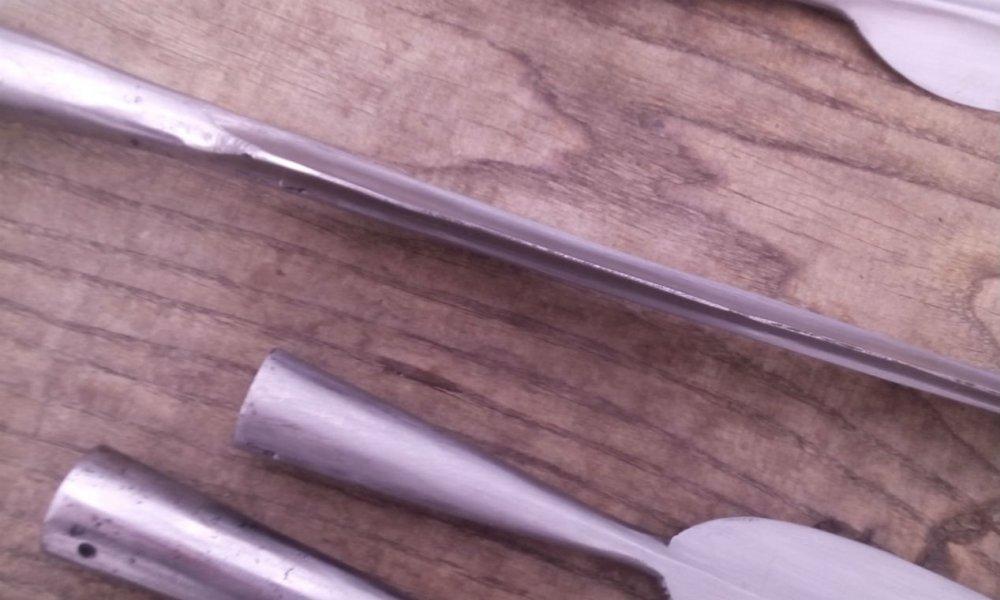
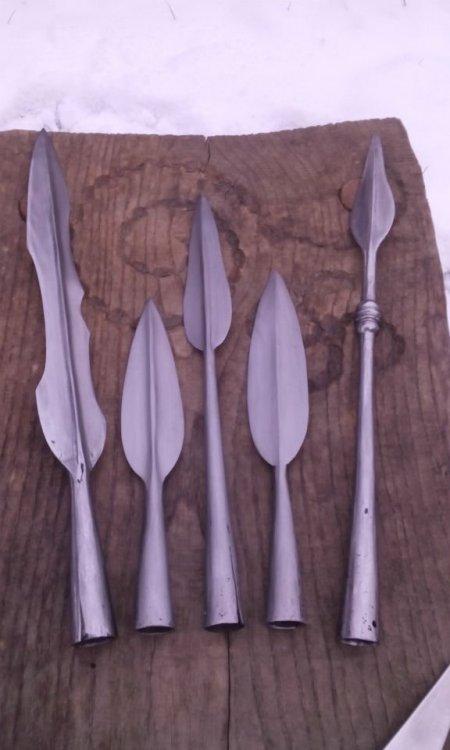
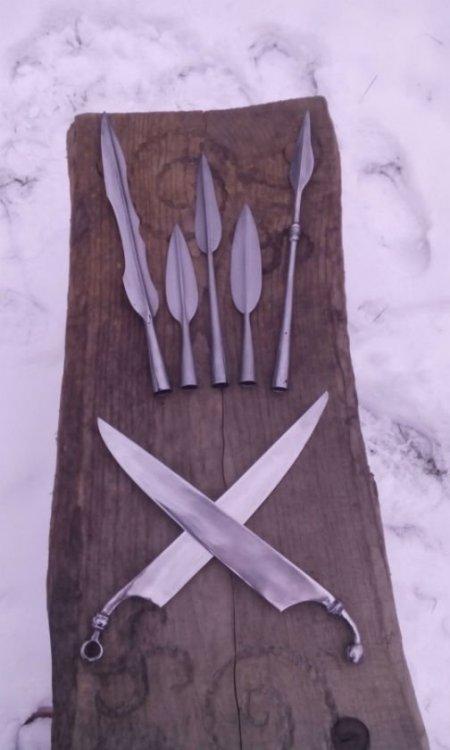


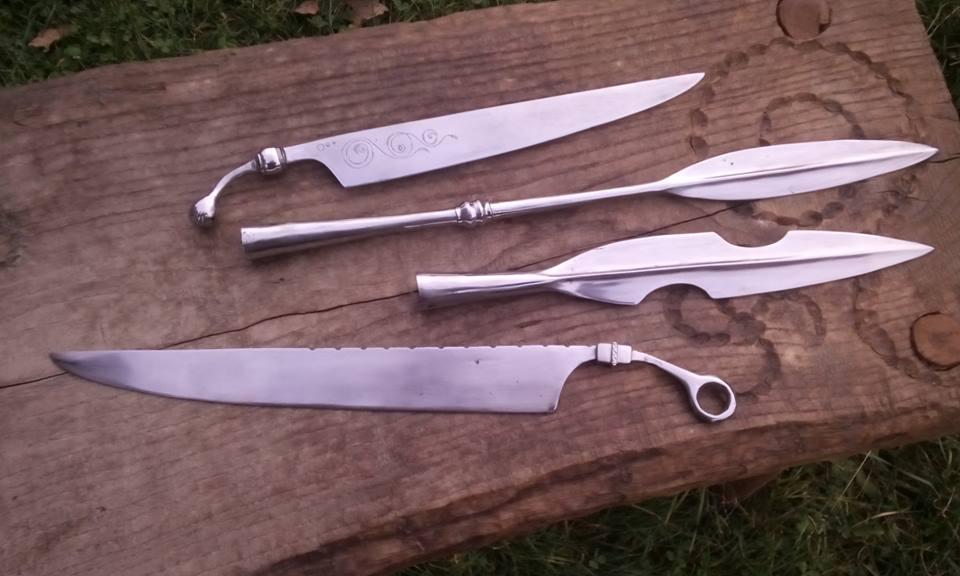

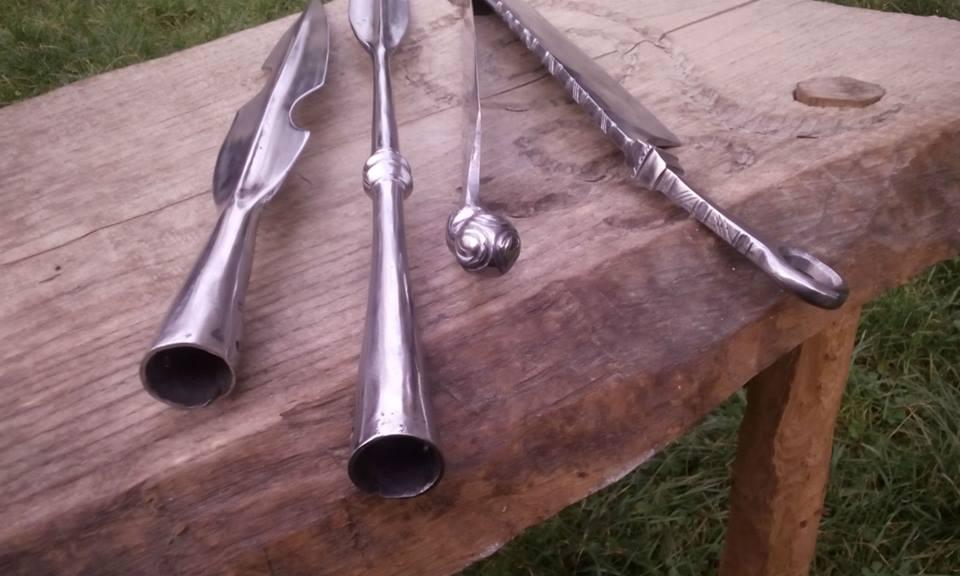
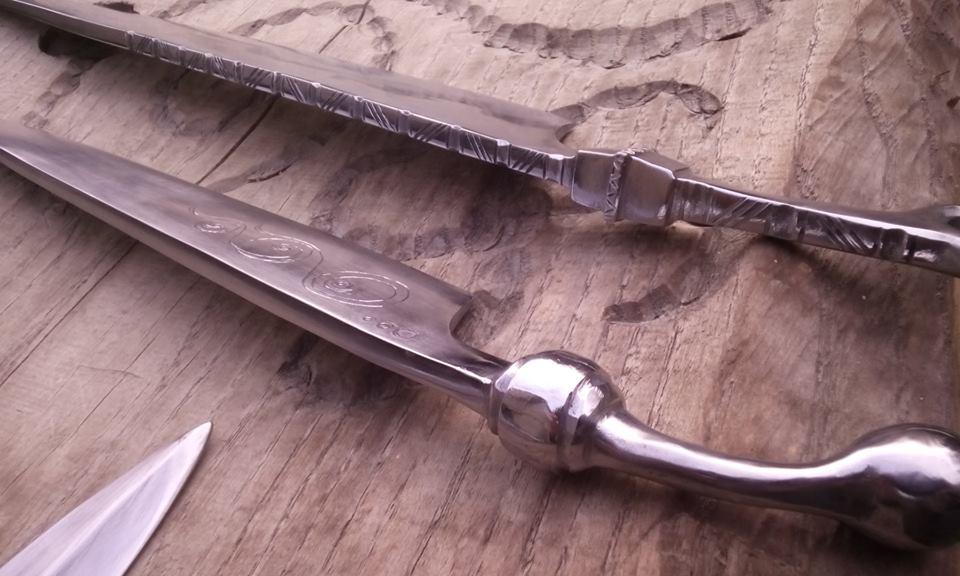
American Indian Triple Batwing Pipe Tomahawk
in Historical Blades
Posted